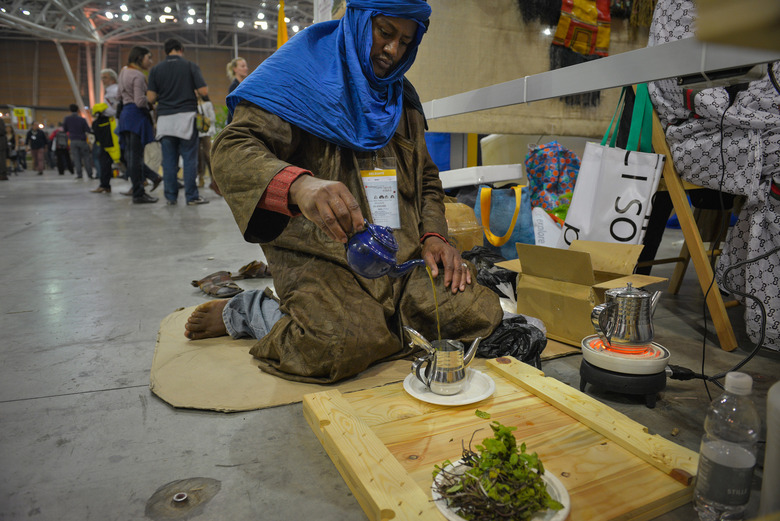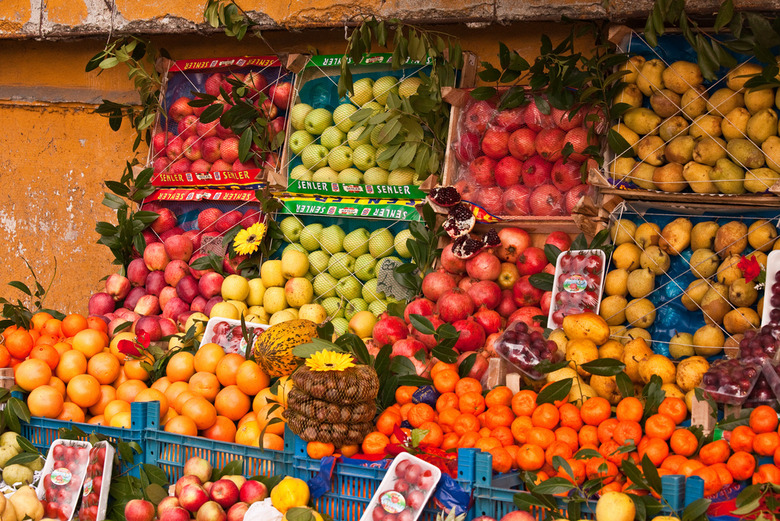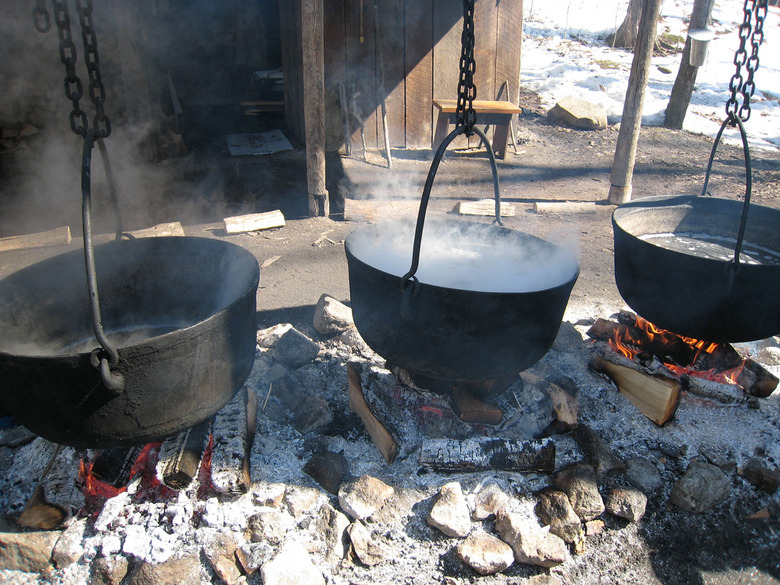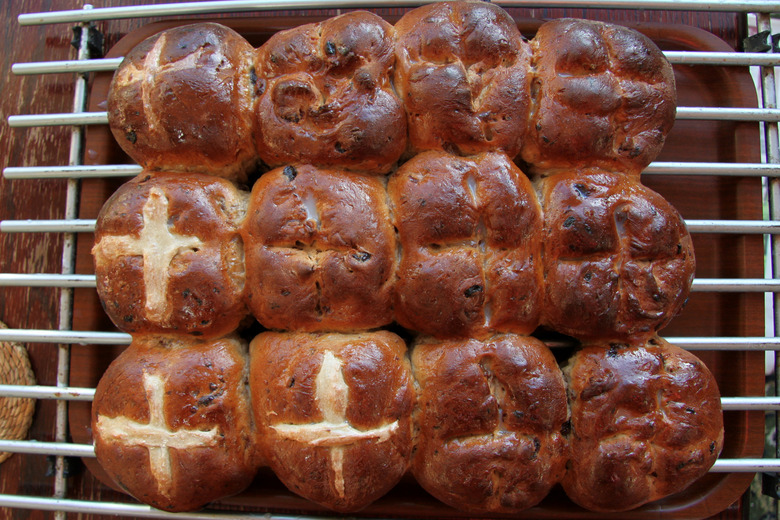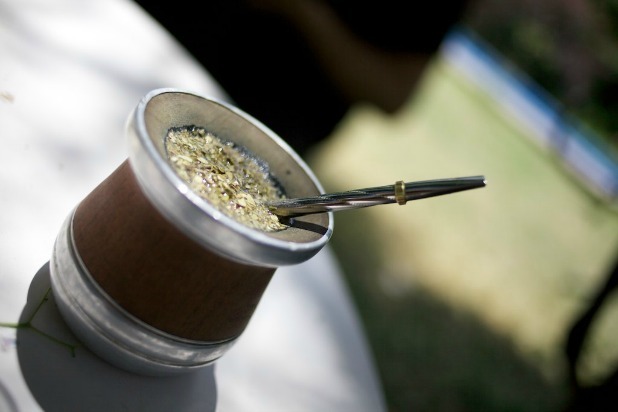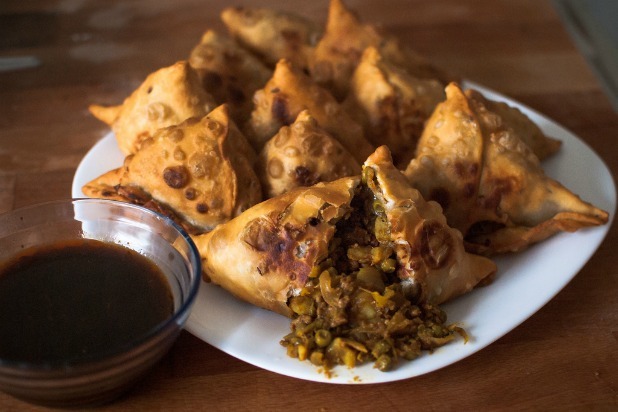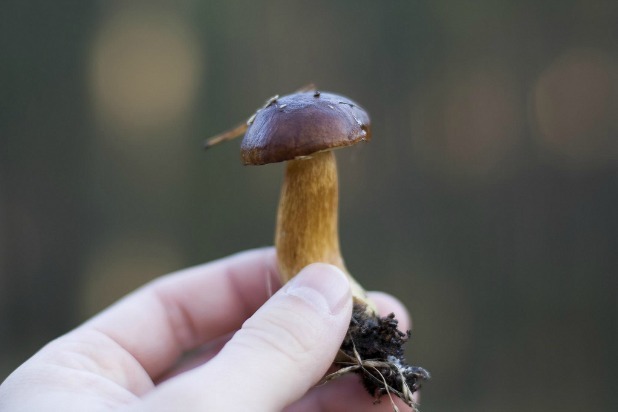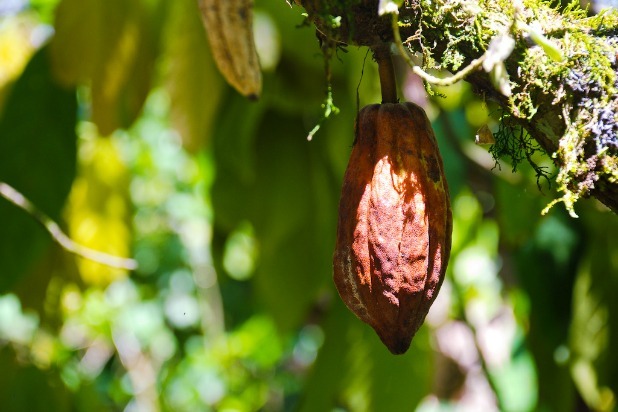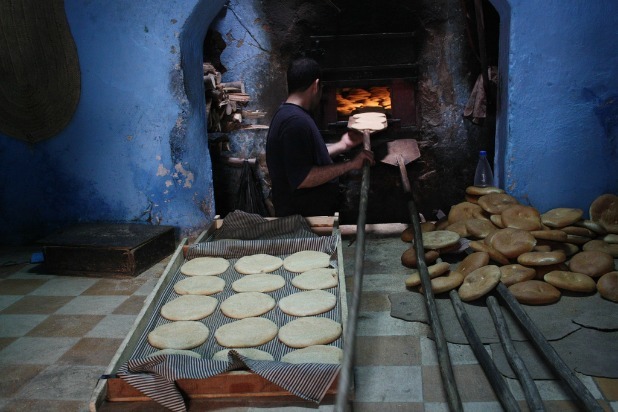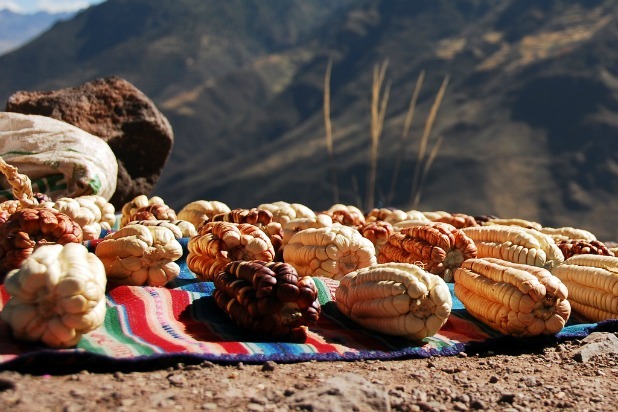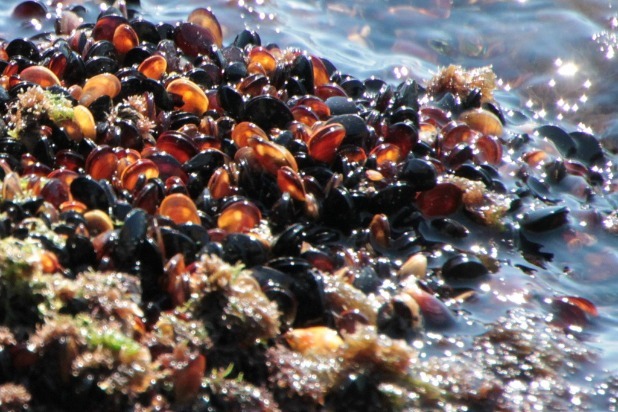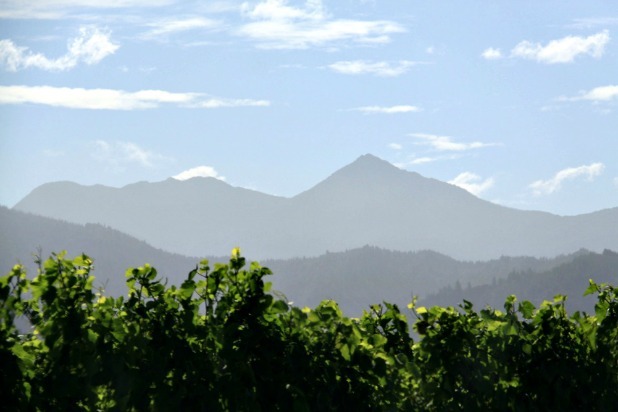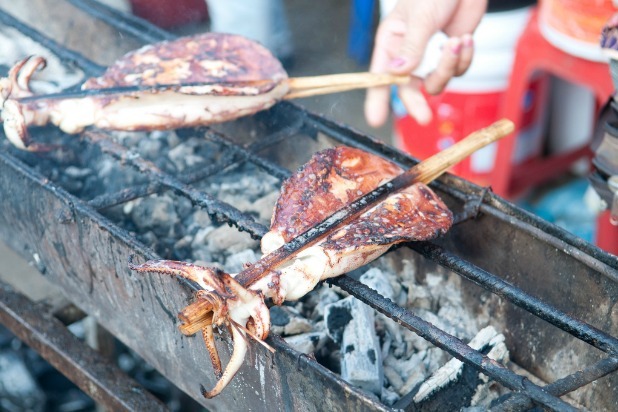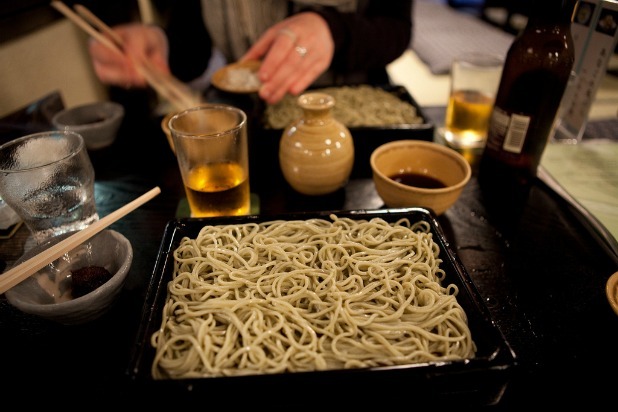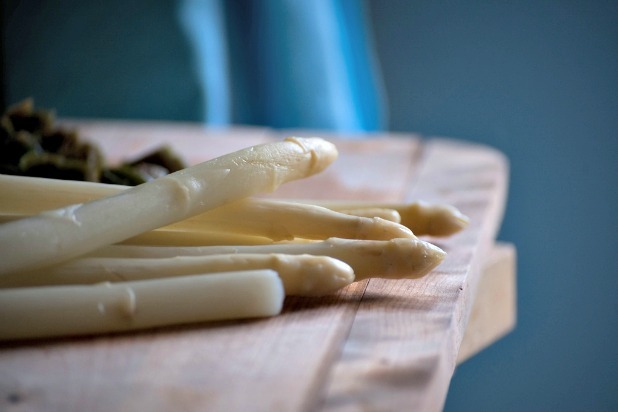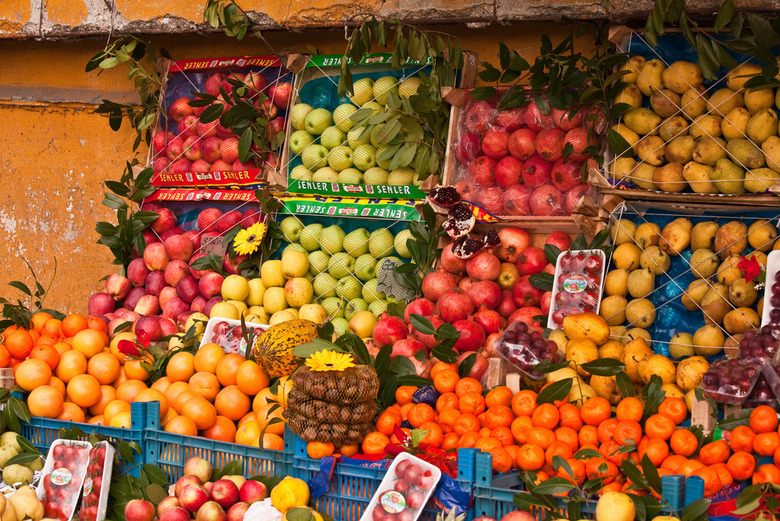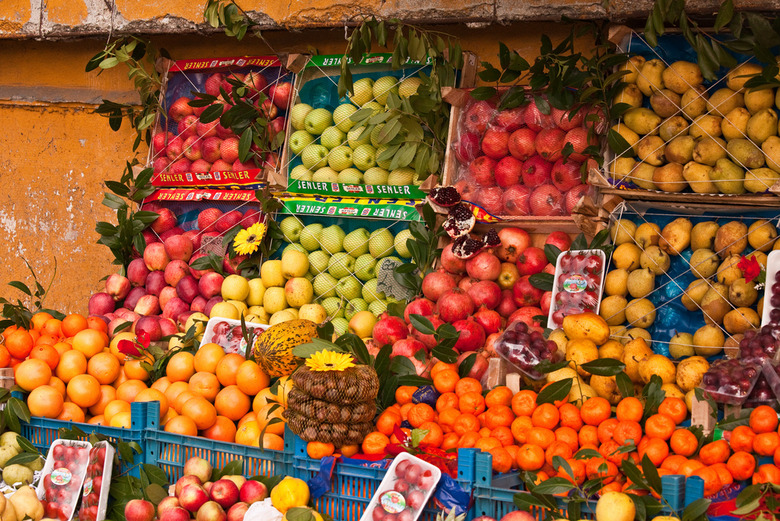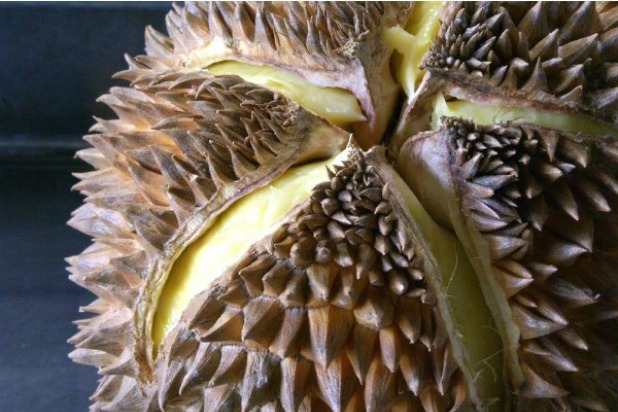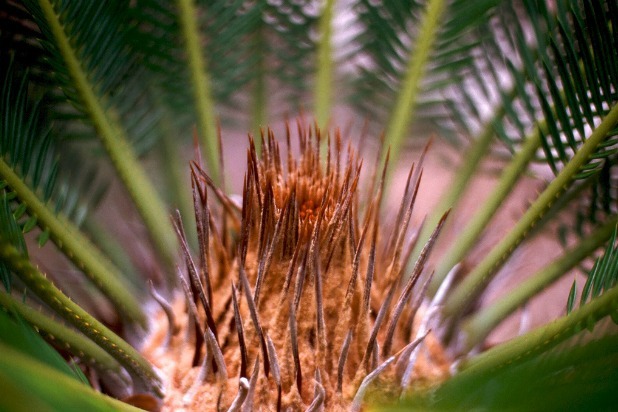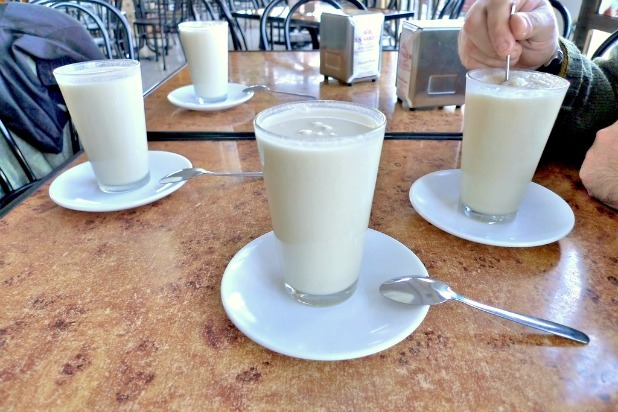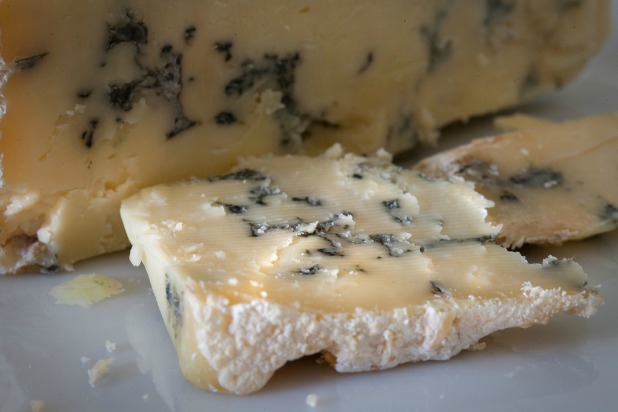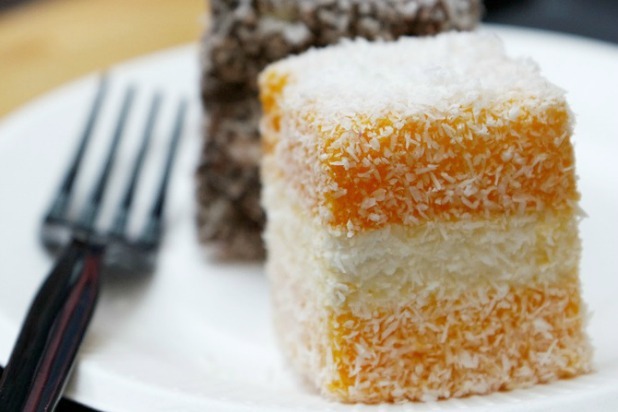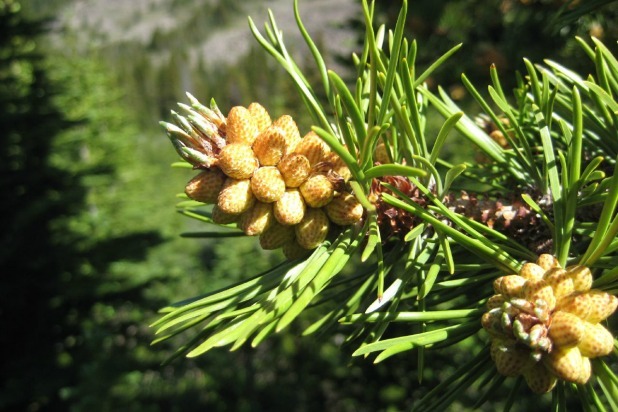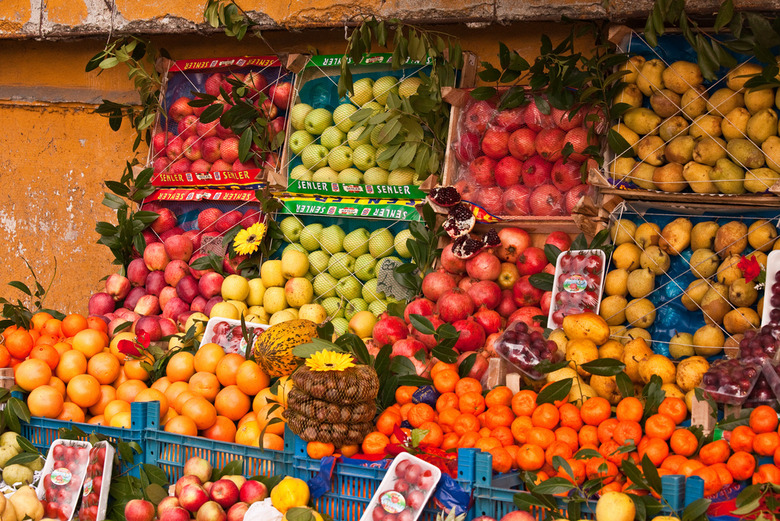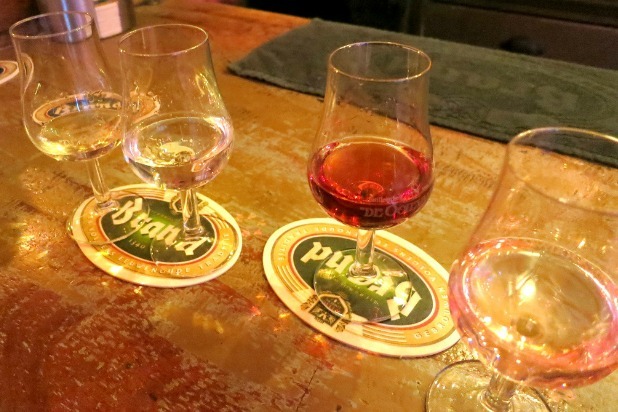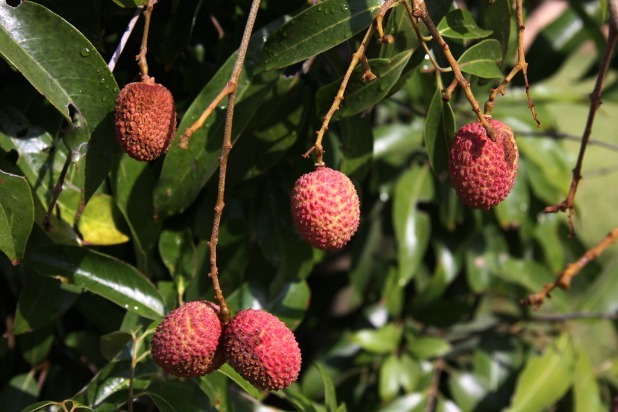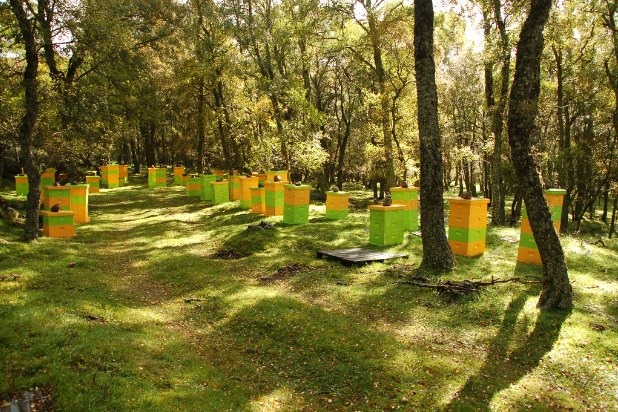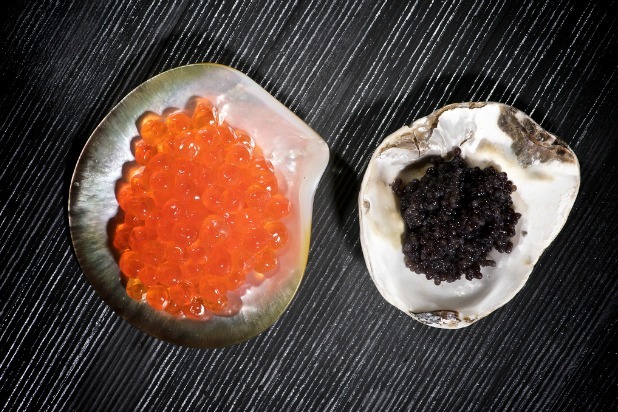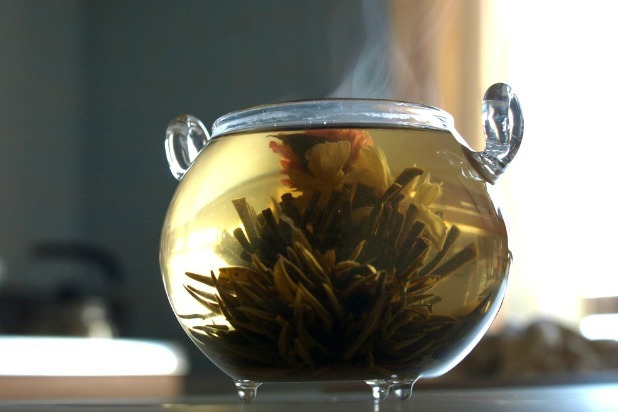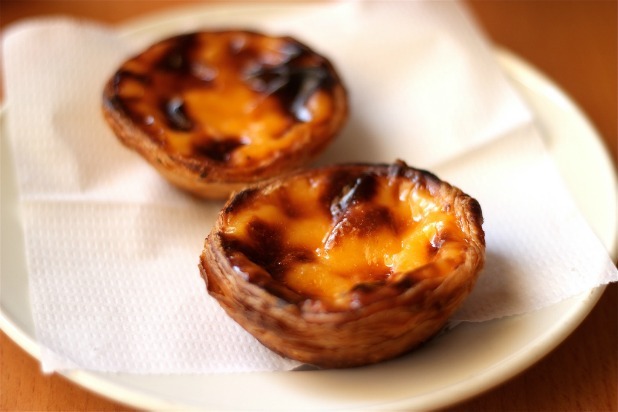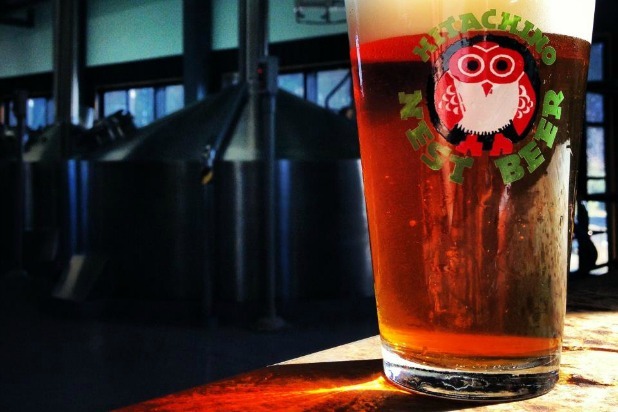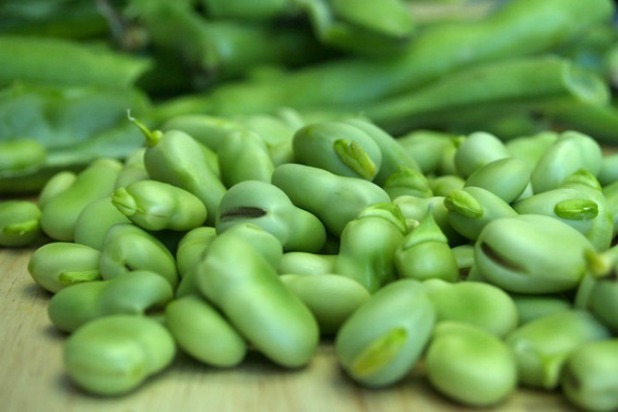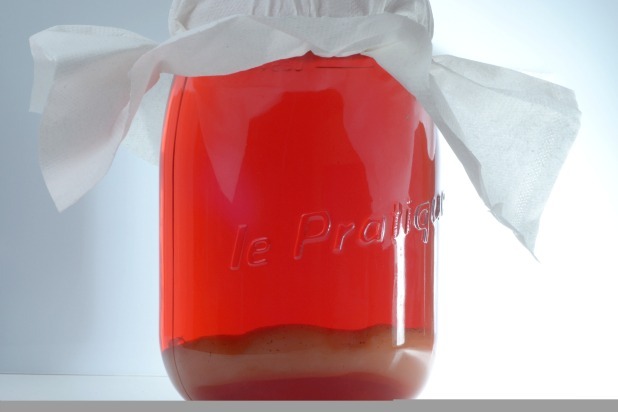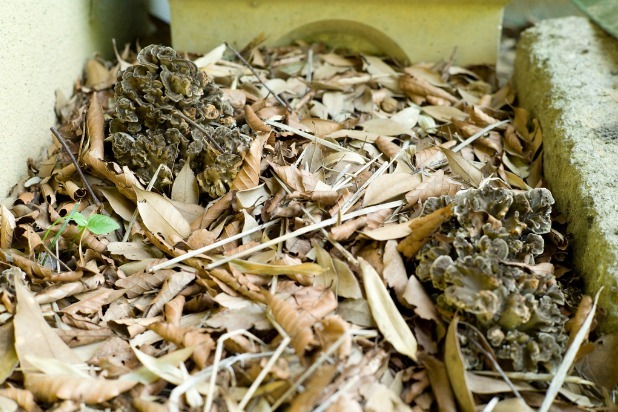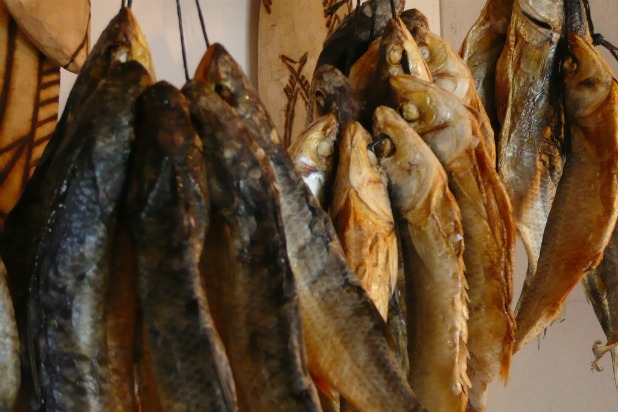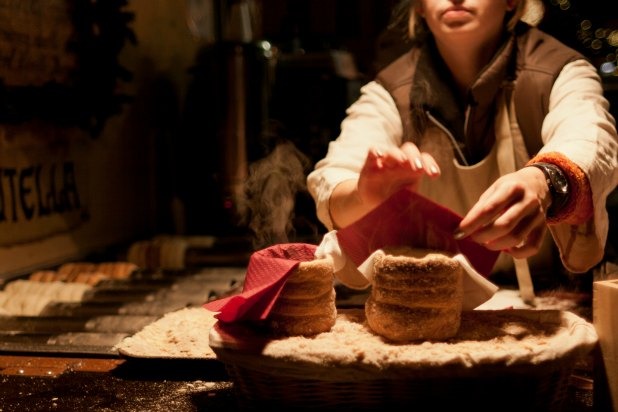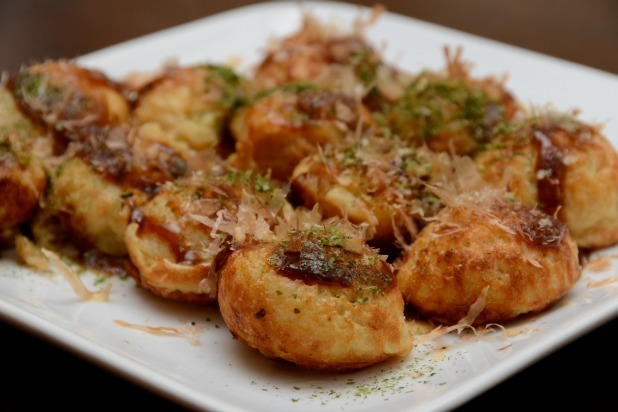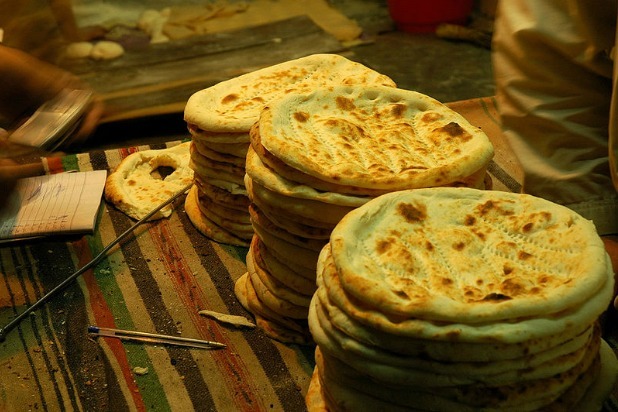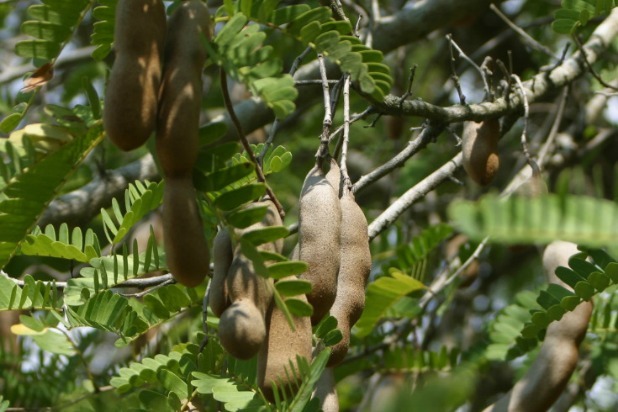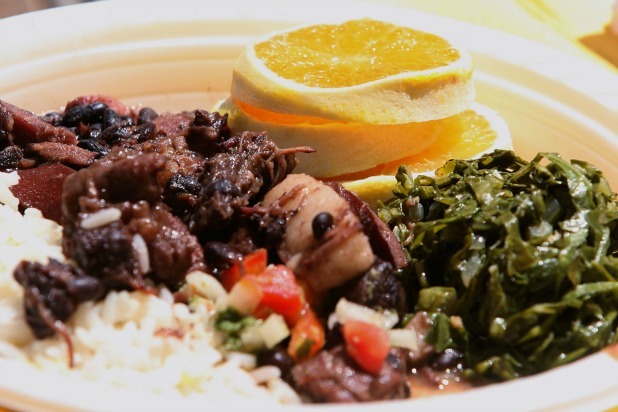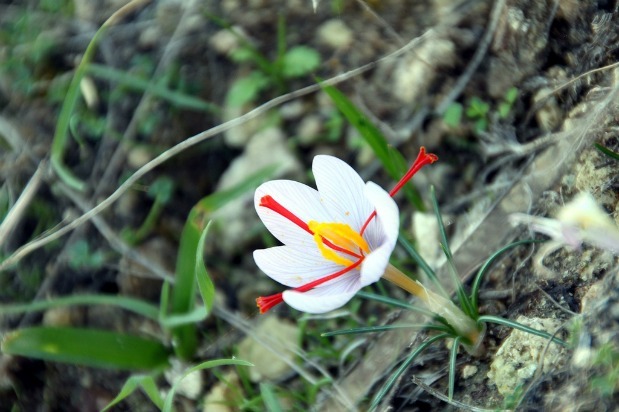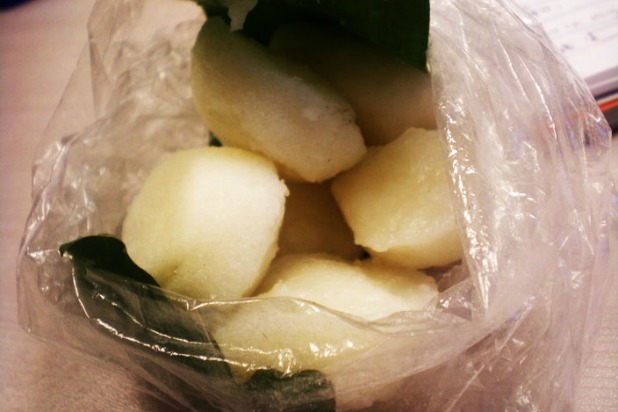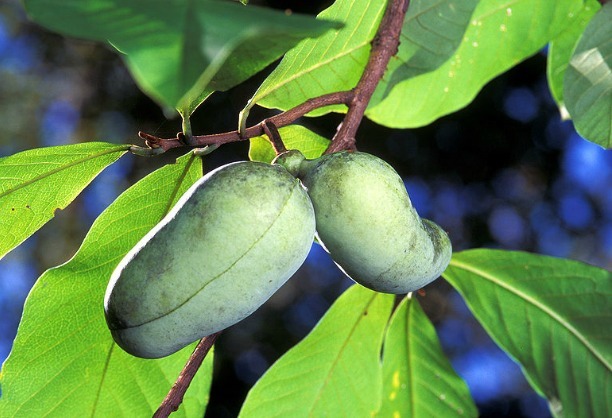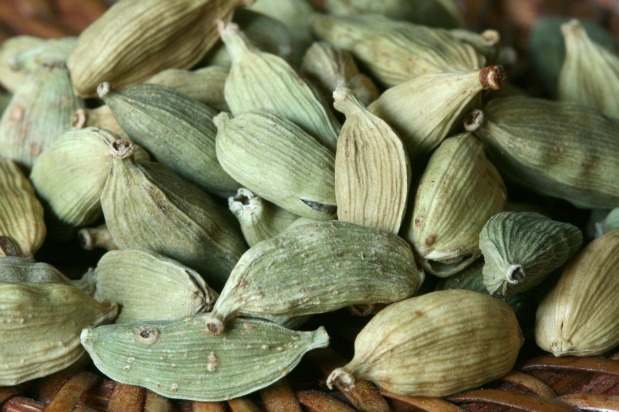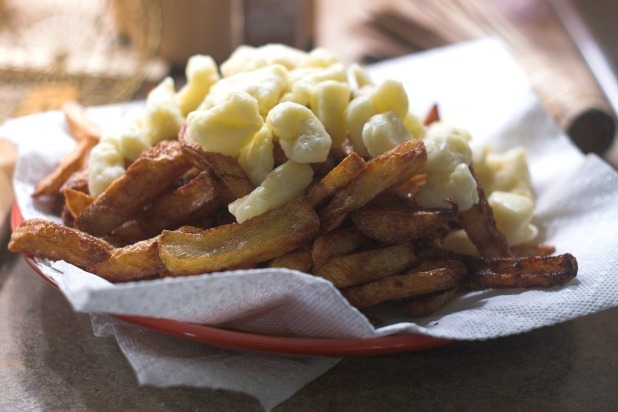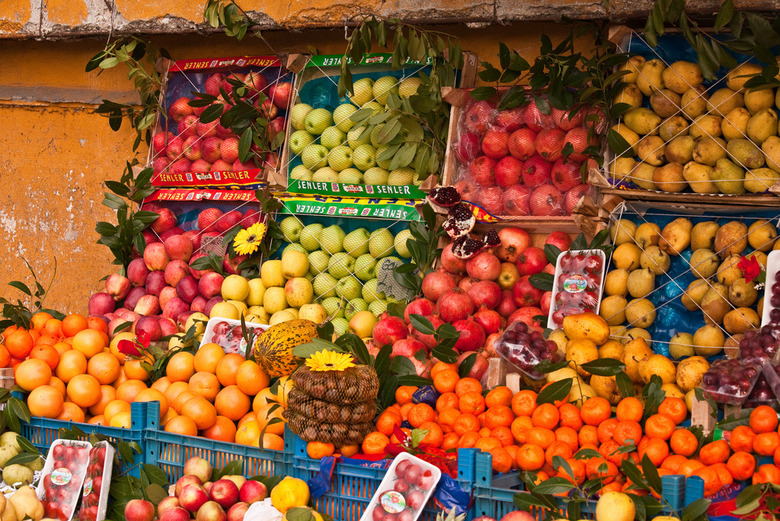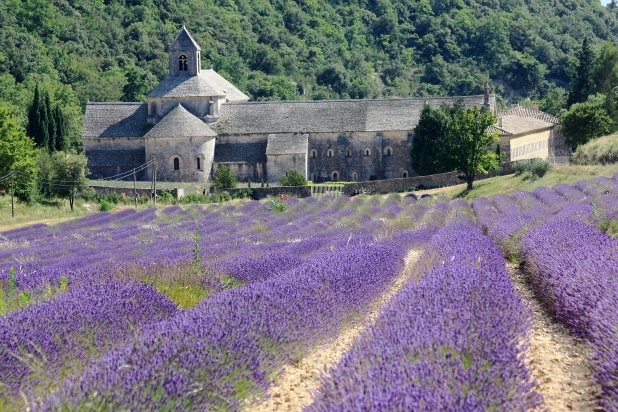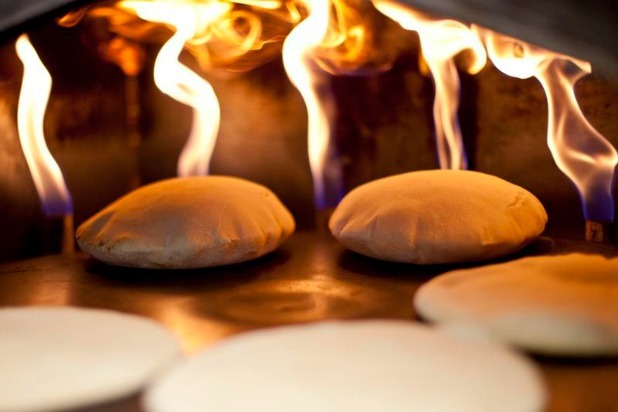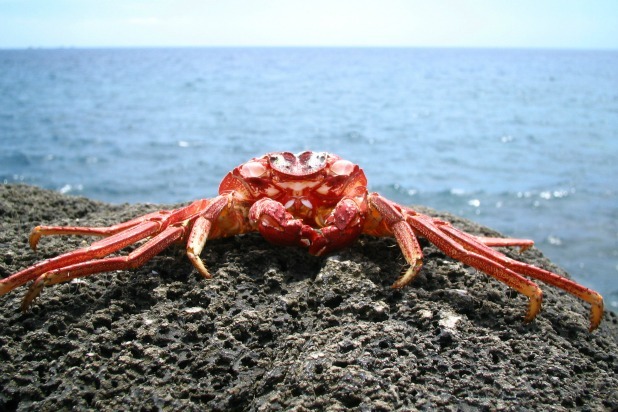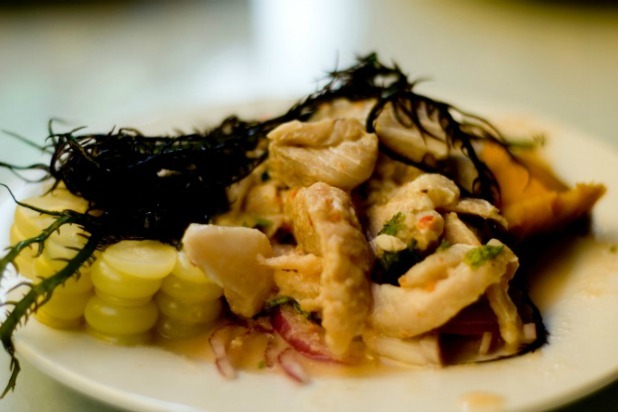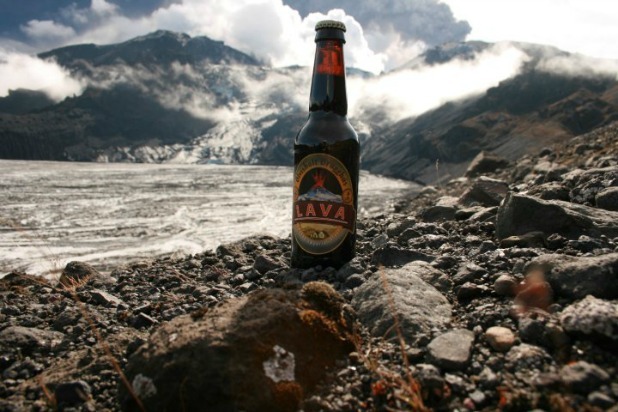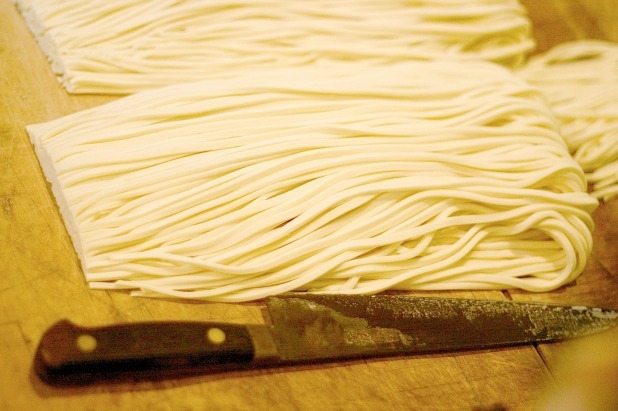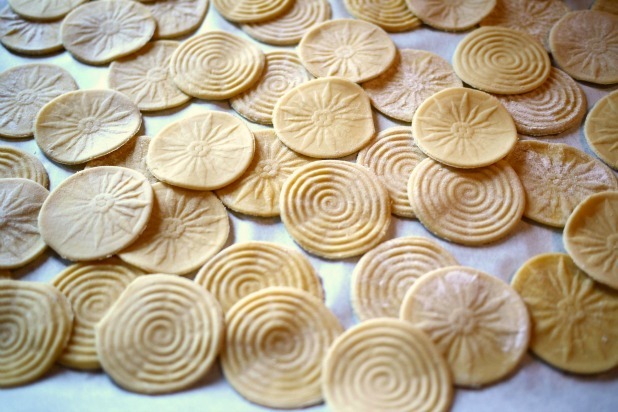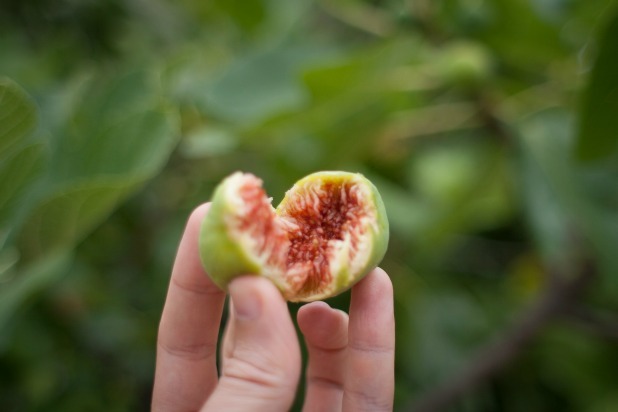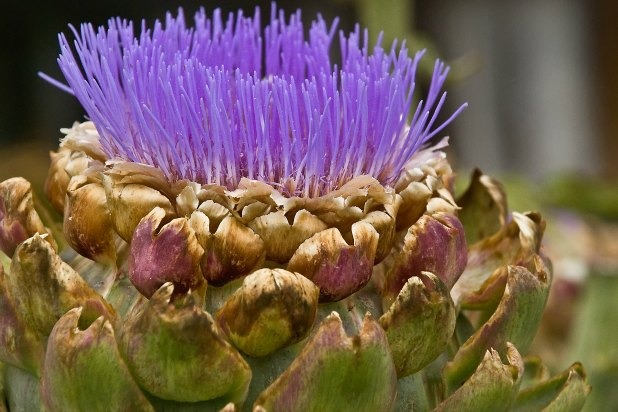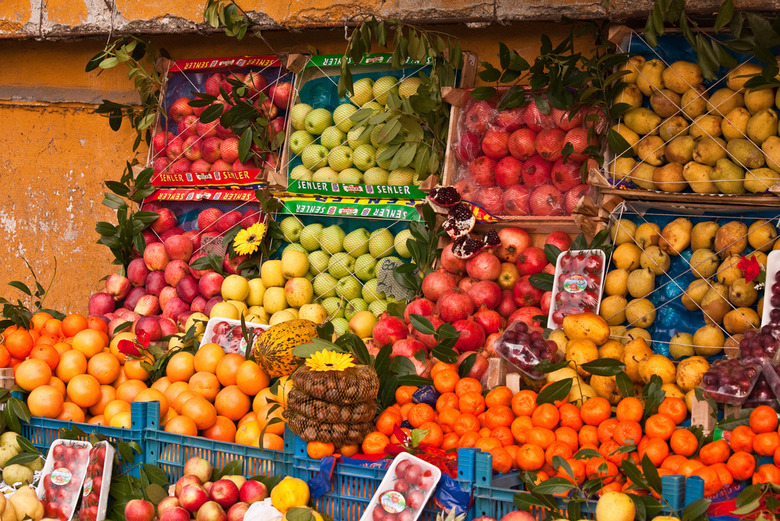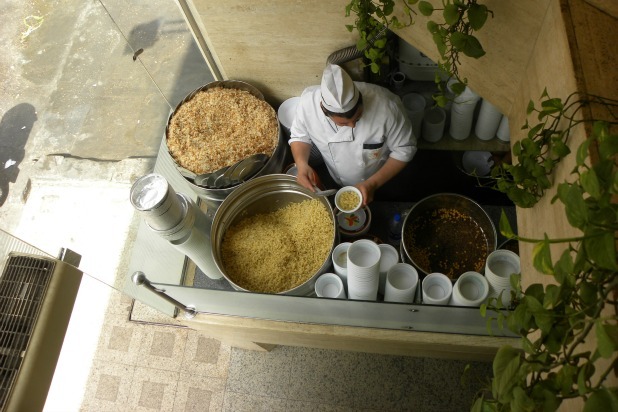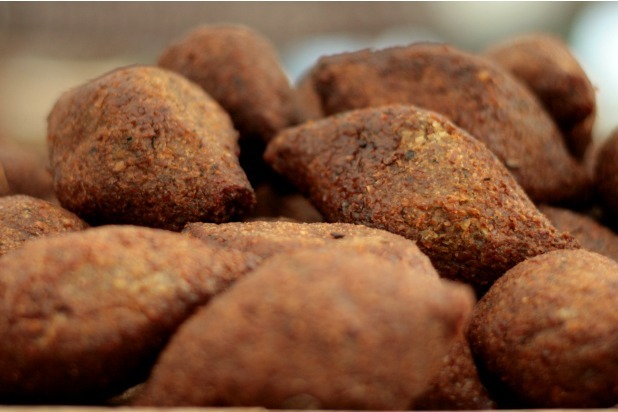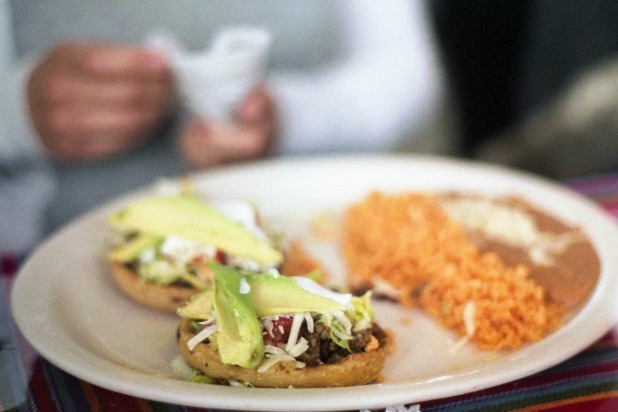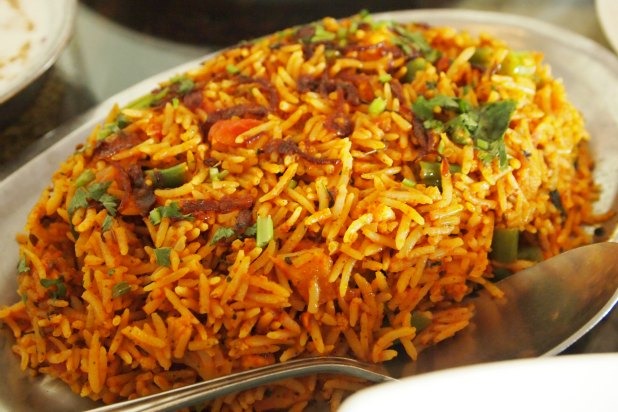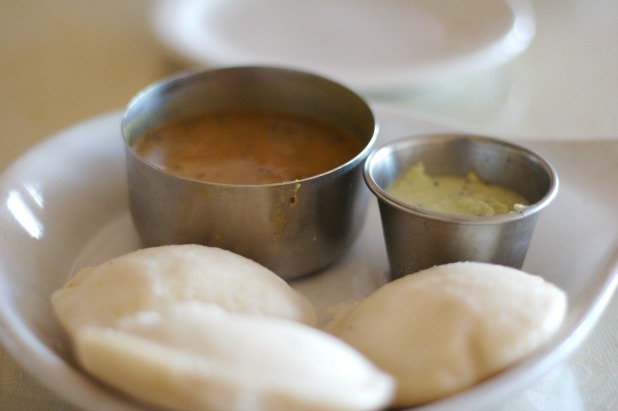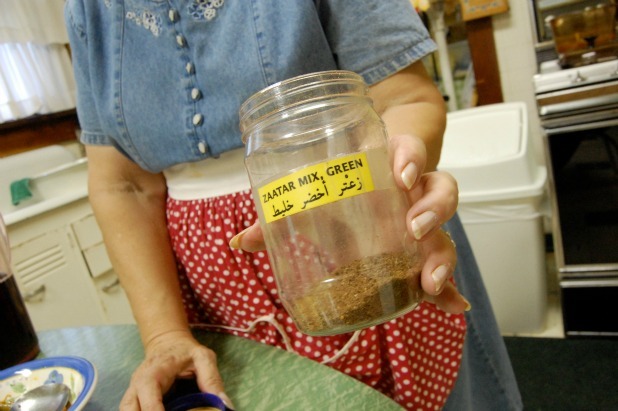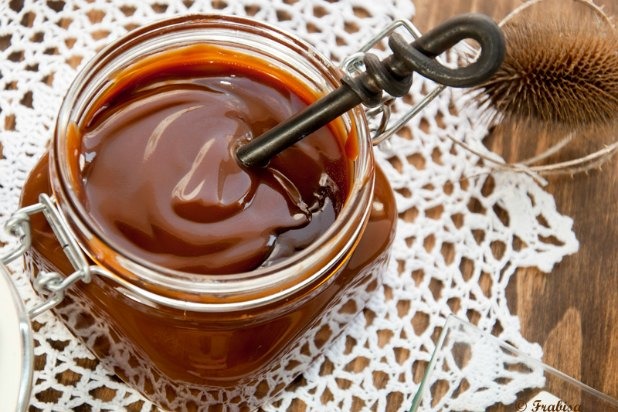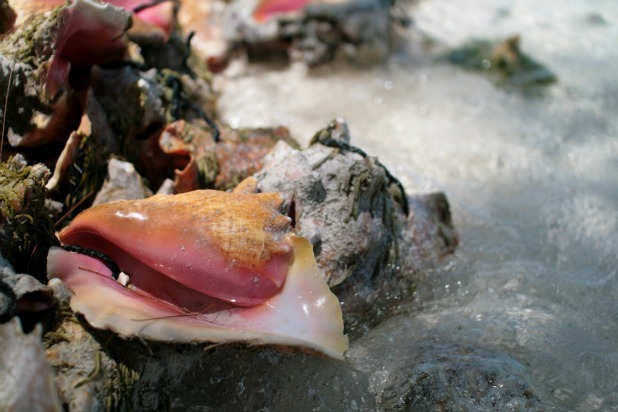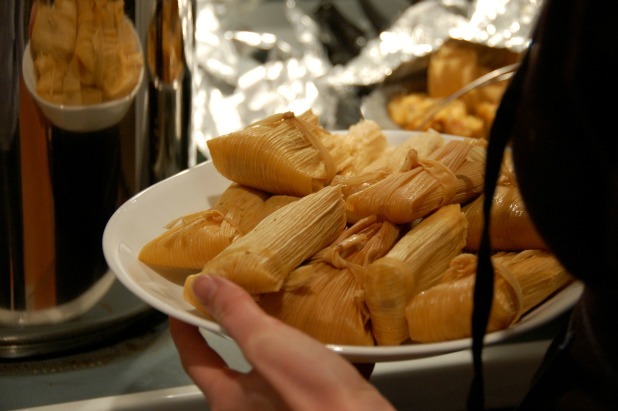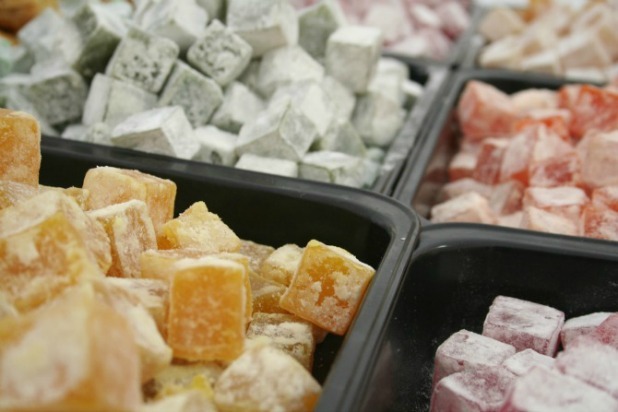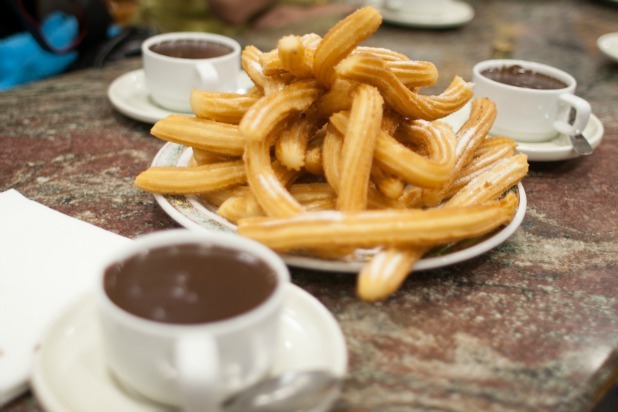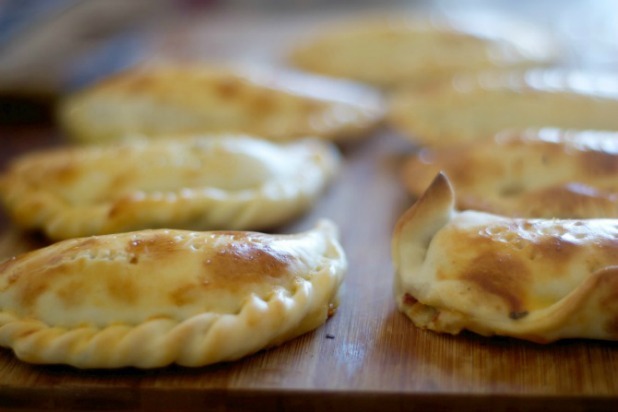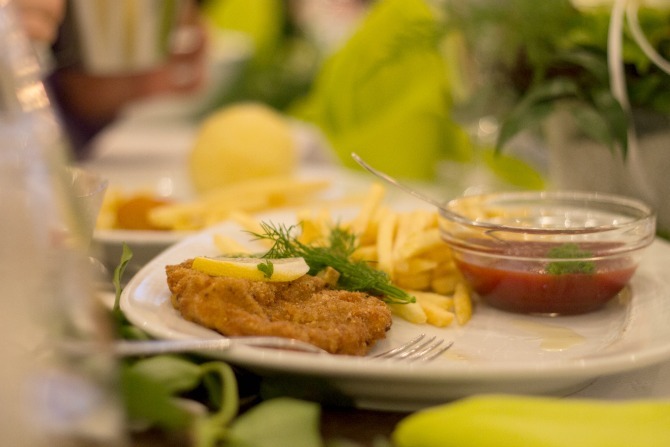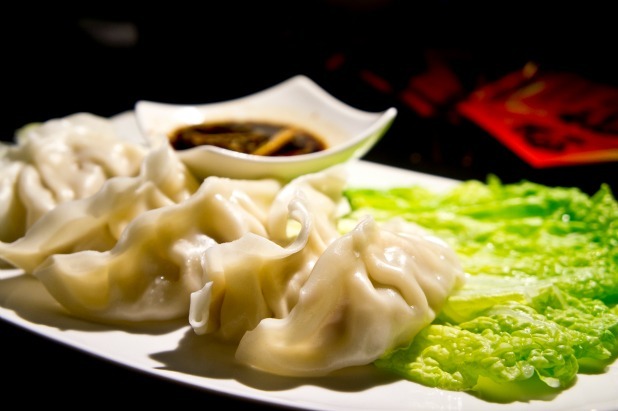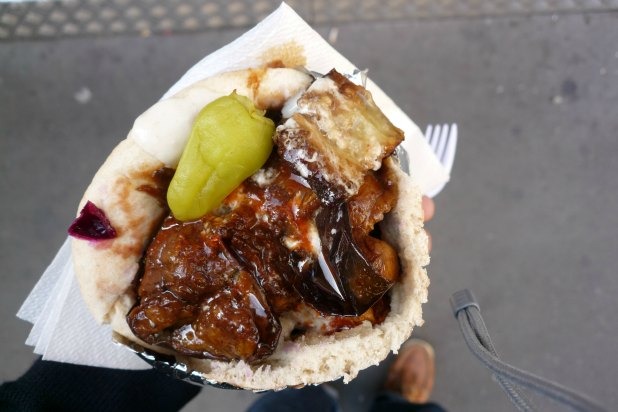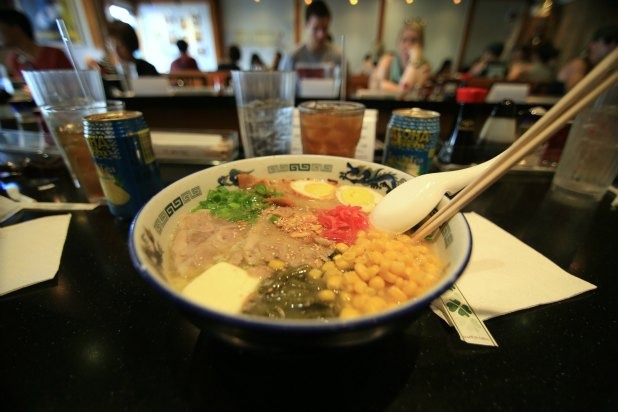Travel Photo Of The Day Slideshow
Many cultures have important rituals centered around tea. The Japanese tea ceremony can range from a simple gathering to an elaborate meal, while afternoon or high tea in the U.K. and Ireland is more of a daily snack. Even the variety of tea (including black, green, oolong, white, etc.) can make a difference.
In Mali, tea ceremonies signify friendship and welcoming. Malians generally simmer green tea and mint leaves in a small teapot before adding significant amounts of sugar. They drink several cups of the tea from small glasses and use this time (sometimes upwards of an hour and a half) to relax, chat, and take a break. The custom is so widespread that the tea is oftentimes referred to as the country's "national drink."
Fresh Fruit in Istanbul
Thanks to an accommodating Mediterranean climate, Turkey![]() is rich with fresh fruits: figs, grapes, apples, apricots, and pears, to name a few. Turkey is also home to pomegranate and many varieties of citrus. Turks usually eat these either fresh or dried — or juiced, as the case may be (word on the street, however, is that straight-up pomegranate juice can be overwhelmingly sour and viscous!).
is rich with fresh fruits: figs, grapes, apples, apricots, and pears, to name a few. Turkey is also home to pomegranate and many varieties of citrus. Turks usually eat these either fresh or dried — or juiced, as the case may be (word on the street, however, is that straight-up pomegranate juice can be overwhelmingly sour and viscous!).
Fresh produce is easy to find when traveling through the country, but be sure to browse the Grand Bazaar for a wide offering. Built in 1455, it is one of the largest and oldest covered markets in the world and includes 60 covered streets, 5,000 shops, and attracts up to 400,000 visitors on a daily basis! Unsurprisingly, it can be a bit chaotic, but is worth a visit for the food![]() alone. It's located inside the walled city of Istanbul and is open Monday through Saturday from 9 a.m. to 7 p.m.
alone. It's located inside the walled city of Istanbul and is open Monday through Saturday from 9 a.m. to 7 p.m.
Czech Beer
Did you know that Czechs drink more beer per capita than any other country in the world? Although they brew a variety of beers, some of the most popular Czechs beers are pale (usually pilsner) lagers. A couple of the country's more famous pale beer brands that non-Czechs may be familiar with include Pilsner Urquell and Budweiser Budvar.
Throughout much of the world, the name "Budweiser" might evoke another well-known beer brand. In the European Union, however, the term has a history of contested use. The first brewery to use the term was the Budjovický mšanský pivovar, founded in 1792 in the city of Ceske Budejovice (also known by its German name, Budweis).
The American brewer Anheuser-Busch released another "Budweiser" beer in 1876. This move eventually led to a trademark dispute that gave Budweiser Budvar a Protected Geographical Indication in the European Union. This means that Budweiser Budvar has exclusive control over the Budweiser brand name throughout the whole EU. In the U.S. and Canada, though, one can find Budweiser Budvar under a different name: Czechvar.
Italian Gelato
We're on the cusp of spring (or winter, if your glass is half empty) here in the Northern Hemisphere, and the arrival of warmer temperatures has us dreaming about sunny destinations... Italy, to be specific. And, of course, no sunny day in Italy would be complete without a generous helping of gelato.
Although it's similar to ice cream, a classic Italian preparation makes it unique. In general, gelato has a significantly lower fat content than most ice creams (like 3 to 8 percent versus 11 to 16 percent). This allows one to savor the more delicate tastes of a particular gelato flavor![]() since there is a lower quantity of fats to mask the tongue.
since there is a lower quantity of fats to mask the tongue.
Oftentimes, ice cream and gelato also differ in texture. Different churning methods and processing speeds allow for a difference in air content (gelato generally has no added air), which in turn affects a given product's "mouthfeel."
A final major difference is the serving temperature. Since classic Italian gelato, unlike ice cream, isn't served frozen, you have to be quick to lick it up! We're not complaining, though...
Canada's Maple Syrup
Spring is synonymous with maple syrup season throughout certain regions of Canada — Québec, in particular (they are responsible for three-quarters of the world's output!). As winter wanes, maple trees start to release their sugary sap and harvesters eagerly tap at the start of this ephemeral season.
Harvesting maple syrup and sugar (the remnants of the sap after it's boiled for longer than needed to make sap, also known as maple taffy) is a tradition that dates back to before the European colonization of North America. It is actually one of the few modern agricultural processes in North America that is not a European colonial import. In its most basic practice, harvesters used tools to make incisions in the trees before inserting another tool that would allow the sap to run into buckets made of birch bark. The sap was then "slightly concentrated either by throwing a hot stone in the bucket" or by allowing it to freeze overnight before disposing of the top layer of ice.
From artisanal to industrial, modern methods have evolved to allow a range of harvesting and processing methods. As in today's travel photo, tapping and boiling one's own syrup at a sugar shack (or cabane à sucre) remains a popular activity for locals and tourists.
Bermudan Hot Cross Buns
Bermuda's fruit-filled delights are only complete when a fishcake is between them. Bermuda's fishcakes are made from cod (a fish not available in Bermuda, but a tradition from their British ancestors), potato, thyme, onion, parsley, curry powder, salt, pepper, and a covering of flour before deep-frying.
Maté in Argentina
If you've done any traveling through South America, then chances are that you've probably seen locals sipping from a stout vessel with a filtered metal straw. Traditionally, this container is a hollow calabash gourd (sometimes also horn, wood, or clay) with a stainless steel straw. Although pretty much any beverage could be served from this charming cup and straw, it is almost strictly reserved for maté: an herbal tea infusion made from the leaves of a yerba maté plant. In general, it's the South American (especially in Argentina, Paraguay, Uruguay, and Brazil) equivalent of coffees or teas.
The yerba maté plant is actually a holly that has been harvested from the Parana-Paraguay river system since before colonization. It contains caffeine and is actually one of the many "New World" caffeinated beverages that were not largely accepted for consumption in Europe around the colonization period. Its consumption did spread throughout South America, however, and it became a popular beverage across the continent after 1700. River transportation running south of Paraguay eventually brought the drink to Argentina (see above), where its consumption remains a common and casual habit.
These days, you can find the tea and its accompanying gourd worldwide, but why not get it from the source?
Samosas
One of the incredible things about food is its ability to transcend borders. Such is the case with the simple samosa. From Southeast Asia to southern Africa, different preparations of this adaptable dish allow us to experience not only the local ingredients, but also local tastes.
Versions of this typically triangular pastry vary depending on the culture. In India, a samosa is usually fried in vegetable oil and includes boiled potatoes, peas, and a variety of spices. The Pakistani version of the snack is similar, but also significantly spicier. Kenyan samosas (or samoosas) are also similar to their Indian and Pakistani counterparts in spices and preparation, but oftentimes include ground meat while Indians (among other cultures) largely serve vegetarian variants. Meanwhile, throughout central Asia (including Kazakhstan, Kyrgyzstan, Tajikistan, Turkmenistan, and Uzbekistan), samsy include meat and are most often baked in a clay oven.
Do you have a travel photo that you would like to share? Send it on over to lwilson[at]thedailymeal.com.
Follow The Daily Meal's Travel editor Lauren Wilson on Twitter.
Foraging for Mushrooms in Slovakia
For Slovaks, mushroom foraging is a longstanding cultural tradition. Some avid hunters (who come from all walks of life), regularly harvest up to 25 different edible speciesof fungi per season throughout the county's woodlands.
As one might expect, though, consuming foraged fungi necessitates eating with caution. Some mushrooms are toxic and a bad bite is enough to send the eater to the hospital. When properly sourced and prepared, though, these mushrooms and truffles are delicacies.
Small details in the cap, stems, and roots are clues that we might expect hunters to notice while distinguishing different species. Another helpful strategy used to identify certain fungi is a neighboring tree species. For example, the coveted dubák variety is oftentimes found near dub, or oak, trees. The same also applies for brezák mushrooms, which grow near breza, or birch, trees.
In a similar fashion, some mushroom names reflect calendar dates corresponding to their growing season, whereas others take their names from certain properties. An apt example is the prašivka, or the "powder mushroom" that "explodes in a grey puff of dust when you step on it."
Cacao Fruit in Costa Rica
When frosting a cake with chocolate icing or inhaling the aroma of a cup of hot cocoa, most of us probably don't consider our chocolate's actual origin: a bulbous, melon-like fruit wrapped with a thick and fleshly skin. For whatever reason, the connection's not always immediate.
Chocolate, as many of us know it at least, comes from the seeds (known as "beans") of the tropical cacao pod. These fruits, which unsurprisingly grow on a cacao tree, grow year-round and can hold up to 20 to 50 beans. To give you an idea of the amount of chocolate in a bean, it takes about 400 beans for every poundof chocolate.
After being removed from the pods, beans are fermented and dried. Depending on the climate, this process can take close to a month before the resulting product is either used as an ingredient, or subject to roasting and further processing to convert chocolate to its most widely known forms.
In Mesoamerica, where the cacao tree originates (although the top cacao bean producers are in West Africa and Southeast Asia), harvested and fermented beans are often ground at chocolate mills. The cacao can be mixed with a variety of different ingredients (like cinnamon, chile, and vanilla) to make drinking chocolate, or be sold as an important ingredient in savory foods like mole negro.
Moroccan Khobz
If we define bread by its most basic ingredients — a combination of flour, water, and salt — then many cultures worldwide have their own version of this basic food. In Morocco, like in many other countries, oven-baked flatbreads are a quotidian staple.
Known in Arabic as khobz (or khoubz or kesra, depending), bread in Morocco is "shaped into round, flattish loaves with lots of crust." There is no single standard flour for khobz, but white, semolina, wheat, rye, bran, and barley (sometimes with a little anise or cumin seeds for spice) are common.When eating certain meats, sauces, soups, and salads, it's customary for this bread to replace utensils at the traditional dinner tables.
Waffles in Belgium
In Belgium, there are no "Belgian waffles" — at least not by the same name that Americans use. What Americans know as Belgian waffles, Belgians have another name for: Brussels waffles, or gaufre de Bruxelles.
Unique for their high grid, general fluffiness, and slightly fermented aroma (traditional recipes use yeast as a leavening agent instead of baking powder), Brussels waffles have been poplar snack in Belgium since the Middle Ages. As one might expect, the recipe back then was a little different from the waffles that we know today; instead of all-purpose white flour, they included barley and oats.
As the waffles have evolved from "unleavened crisp cakes" to the warm, supple pastries we know and love, they've also been paired with a few (now common) garnishes: confectioners' sugar, chocolate, soft fruits, and whipped cream, to name a few.
For the gaufre connoisseur, Liège waffles are also common in Belgium and differ slightly from the gaufre de Bruxelles. They are made from a brioche-like dough that is sprinkled with sugar during the final rise. The sugar eventually caramelizes on the griddle, which creates a fragrant and golden crust.
Corn in Peru
Since 1200 B.C., Peruvians have grown corn of all colors: white, yellow, purple, and black are just a few. There are more than 55 varieties of corn currently grown along the Peruvian coast, highlands, and jungle — this makes for the most variety than anywhere else in the world!
Given the diversity of the different varieties of corn (which is the consequence of different varieties adapting to different climates over time), it's normal to expect that Peruvian corn is not exactly like the corn that's known in the States. In comparison, corn in Peru has longer kernels, is chewier with a thicker texture, is less sweet, and generally has a nutty aroma.
Corn is one of the foundations of Peruvian cuisine and is also used in drinks like the purple corn-based chicha morada and stews including pepián (corn with onion, garlic, chiles, and sometimes turkey). There are also Peruvian desserts that use corn as a main ingredient; sanguito is a common cake made from yellow corn flour, raisins, and a sugarcane molasses known as chancaca.
Mussels
Although we usually think of spring as a time of rebirth and growth for many edible plants and animals, some foods are actually at their best during the winter months. Mussels are a good example.
Like other species, mussels begin spawning in the spring — an act that apparently affects the quality of their meat. There are many different varieties of mussels throughout the world and about 17 are edible (common blue, Mediterranean, Baltic, and greenshell are the most popular). Wild mussels are found on exposed shores and intertidal zones worldwide, yet most of the mussels that we consume today are farm-raised.
Given their presence on many different continents, traditional recipes for this dish are diverse. France, Belgium, and the Netherlands oftentimes eat theirs steamed with fries (otherwise popularly known as a moules-frites), while Turks generally stuff their mussels with rice, currants, pine nuts, tomatoes, parsley, and spices. Traditional Spanish paellarecipes incorporate mussels with chorizo and shrimp, and mussels are served with a black bean sauce in China.
New Zealand Wine Country
Although the country produces less than 1 percent of the world's wine, New Zealand wines are known for their exceptional quality. Outstanding sauvignon blancs have been the country's "trademark" winesince the mid-1980s, although New Zealand also grows merlot, cabernet sauvignon, syrah/ shiraz, viognier, chardonnay, gewürztraminer, pinot grigio, and riesling among others.
So what is it about this relatively small place (it's actually 1,000 miles long) that allows for viticultural variety and excellence? Between its north and south counterparts, this stretch of islands has a range of different climates and soil types that promote different grape varieties. The North Island is warmer, with volcanic mountains and hot springs, and the South Island is home to the Southern Alps and deep fjords.
All in all, New Zealand encompasses climates ranging from subtropical in the north to almost arctic in the south!
Calamari
Calamari has been in the news lately. In the midst of several high-profile food scandals, as well as a mounting concern about the mislabeling of our seafood in the States, some of us are a little more trepidatious when buying seafood.
There's hardly a question about what one's ordering in the photo above, however. Calamari, it its various shapes, sizes, and preparations, is a popular dish in across several continents. In China ( pictured above), it's common to see whole squids grilled street-side. Calamari, as it's known in Italy, is generally prepared in a similar way to what we mostly know in the States: rings and arms are battered and fried in oil. Filipinos (along with several other cultures) also enjoy eating the ink by mixing it with adobo sauce.
In fact, the only parts of a squid that are generally inedible are the cuttlebone, beak, and eyes.
Soba Noodles in Japan
If you're traveling through Japan, you may notice that not all noodles are created equal. In addition to there being categories of different noodles, there are subcategories, and probably (we assume, at least) even sub-subcategories depending on who you ask.
One of Japan's main noodle varieties is soba, which is made from a mix of wheat (or komugi-ko) and buckwheat (or soba-ko) flours. They are generally the same thickness as spaghetti noodles and are served both hot and cold.
When served hot, soba noodles are often used in soups. One of the most basic soba dishes, zaru (pictured above), is actually served cold. The dish features previously-boiled, cold soba noodles with a soy-based dipping sauce.
As is often the case, versions of soba vary based upon geography and tradition. Depending on your location, the noodles might vary in thickness, as well as ratio of wheat to buckwheat content.
White Asparagus in Western Europe
If you're in Western Europe this spring, you may have the good fortune of witnessing the arrival of white asparagus. Increasingly sold in the States, white asparagus is generally considered to be a spring delicacy in countries like Germany, France, Switzerland, Belgium, and Italy.
So what's the difference between white and green asparagus? Quite simply, if not surprisingly, only the color. With a thick layer of mulch, plastic, or dirt overtop, white asparagus is grown in a way that prevents exposure to sunlight. Without sun, there's no photosynthesis, hence no green.
Germans are particularly fond of spargel(or white asparagus). Traditionally, they serve the vegetable boiled and with several side dishes including new potatoes, pancakes, ham, schnitzel, or smoked salmon.
Coffee in Ethiopia
After petroleum, coffee is the world's second most valuable traded commodity. It is now grown in more than 50 countries worldwide, but is originally native to Ethiopia in the Horn of Africa. In recent years, the country has usually ranked in the top 10 of the world's largest coffee-producing nations (measured in thousands of bags), along with Brazil, Vietnam, Colombia, Indonesia, India, Honduras, Peru, Guatemala, and Mexico.
You may know what roasted coffee beans look like, but this bean is actually the product of a fruit. Pictured above, coffee beans (which are green before roasted) are actually encased in the "cherry." The fruit grows best at high altitudes in tropical climates, turns bright red when ripe, and is usually only harvested once a year.
Meringues in France
If you've ever visited a bakery in France, then chances are you've seen the cloudlike confection known as a cooked meringue. They're sold in a variety of shapes in sizes depending on their use; some are snacks in and of themselves, while others enhance other dessert dishes.
In their most basic form, classic French meringues are made by whipping egg whites, sugar, acid, and salt. The French are not the only ones with a meringue recipe, however. Instead of incorporating granulated sugar into their traditional recipe, the Italians create a sugar syrup to whip with the egg whites which allows for a more stable final product.
No matter your preference, the pastry is considered to be a delicacy in France, and even inspires entire shops dedicated to only selling la meringue.
Durian
To some, it's the "king of fruits," while to others, it "tastes like rotten onions and smells like feet." With such polarizing opinions, one has to make up their own mind when it comes to durian: a large, yellow, oblong, and spikey fruit.
Prevalent throughout Southeast Asia, durian can give the impression of a sweet cream or custard. Alternatively, the experience of eating durian is also oftentimes described as nearly "putrid." As mentioned before by The Daily Meal, the reason behind the pungent smell is thought to be a compound called indole: a byproduct of bacterial degradation that has an intense fecal odor.
Don't mind us, though. We wouldn't want to discourage you from making your own mind up about this contentious fruit...
Hearts of Palm in Brazil
Considered to be a culinary delicacy throughout much of Latin America, North America, and Europe, hearts of palm are vegetables that are harvested from the center of a palm tree. Palm trees grow throughout tropical climates, but Brazil, Costa Rica, and Ecuador are some of the world's top producers.
This intrusive harvesting process actually requires an entire tree per palm heart since the "heart" is actually the tree's bud. Sans bud, the tree can no longer grow. Not only does this make this exotic ingredient relatively expensive, it has also motivated the development of several domesticated palm tree breeds that have multiple stems with buds. These trees permit the farmers to extract more than one heart from a single tree.
Those who have tasted this ingredient fresh praise it for its tender and delicate flavor. They are oftentimes served alone or in a salad. In Brazil, they are also a popular pizza topping.
Baklava
Baklava is one of the most popular (if not one of the most delicious) Middle Eastern desserts. In its most basic form, baklava includes sheets of flakey phyllo pastry, a sweet filling, and syrup.
Depending on where you are in this part of the world, though, the recipe changes. In Syria, for example, walnuts are a common baklava ingredient and pieces are oftentimes cut in lozenge pieces. However, in certain parts of Turkey, pistachio nuts, hazelnuts, and/or almonds might be layered between pastry sheets. Pistachios are also a common ingredient in Iran, where rosewater is also used in the baklava syrup.
Although this rich pastry can most certainly stand on its own, Turks sometimes eat their baklava with a clotted cream, fruit, or rice garnish.
Horchata in Mexico
As the weather warms up, horchata is a refreshing beverage of choice throughout much of Mexico. Served over ice, it is made with rice and flavored with lime, cinnamon, and sugar.
Horchata is readily found on the streets of Mexico, as well as in many restaurants throughout the country. Its opaque appearance might make you think that it contains dairy, but it is actually lactose-free.
The drink is actually believed to date back to ancient Egypt, where it was made with chufa nuts. The recipe eventually made its way to Spain, where it is still traditionally made chufa-style. One can find the chufa-style in Mexico these days, but the common rice-based recipe incorporated rice since chufa is not native to this part of the world.
Stilton Cheese
If forced to choose a classic English cheese, there's a good chance that many folks would pick Stilton: a blue cheese only (officially) made in the counties of Derbyshire, Nottinghamshire, and Leicestershire in England.
According to European Union law, in addition to being produced within these three counties, must be
"made from locally produced milk that has been pasteurized before use, be made in a cylindrical shape, be allowed to age and form its own coat or crust, must never be pressed, and must have blue veins radiating from the center of the cheese." In other words, Stilton isn't considered to be just any other blue cheese. It's an English culinary icon.
Lamingtons in Australia
If Australians had an official cake, it would probably be the Lamington. Small sponge cake cubes dipped in icing and rolled in shredded coconut, Lamingtons are often found in bakeries and homes across the country.
As the story goes, the modern Lamington tradition is actually accidental. The maid-servant of Lord Lamington, the eighth Governor of Queensland in 1901, reportedly dropped the Lord's favorite sponge cake into melted chocolate. Lord Lamington suggested that she dip the cake in coconut so that the dessert would not be wasted and it would be less messy to eat. Not only was the delicious result unintentional, but also extremely influential!
Although the traditional Lamington comes with chocolate, they can also easily be made with other flavors (like passion fruit, as seen above).
Pine Nuts
You may have noticed the climbing prices of pine nuts in recent months. If so, you're not alone; prices have indeed risen worldwide. These soft and subtly flavored nuts are popular in cuisines around the globe, yet because of a shortage in the world supply, many customers are now turning to more affordable substitutes like cashews or walnuts.
So what's causing this shortage? According to Bloomberg, there are several reasons including "logging, deforestation, fire, and pests" across China, Russia, and the United States. The amount and health of pine nut supplies are tied to the health of their forests since they are mostly a "product of wild ecosystems." In other words, when the forest ecosystem suffers, so do pine nut harvests.
Agave
If you want to sweeten up your food or drink nowadays, there is a long (and seemingly ever-growing) list of alternatives. One of the most popular that is "derived from naturally occurring substances" (keeping with the Mayo Clinic parlance), is agave nectar.
Agave nectar actually comes from the agave plant, which grows throughout the southern United States, northern regions of South America, and hilly regions of Mexico. The nectar itself has been utilized for hundreds of years as a folk remedy (when mixed with salt) for skin infections and wounds. This nectar is also eventually processed for sweetening purposes. It comes from the core of the plant and has a viscosity that's similar to maple syrup.
According to WebMD, a tablespoon of agave has about 60 calories as compared to 40 calories for a tablespoon of table sugar. However, since agave is generally sweeter than sugar, one can use less to achieve their desired amount of sweetness.
Jenever in The Netherlands
Made from juniper berries, grain, and molasses, jenever is essentially a Dutch variety of gin. It typically comes in jonge (young) and oude (old) varieties, which differ in their color, aroma, and malt content. Generally speaking, older jenevers have a deeper yellow color, as well as a more complex aroma and taste.
It is believed that jenever, sans Juniper berries, was originally used for medicinal purposes in the 1700s (some might argue that it still is). The berries were added to improve the taste, and apparently it worked. The Dutch started to drink jenever for pleasure and eventually began to export the spirit worldwide — nearly 4.2 million gallons by 1792!
Amsterdam is unsurprisingly known for jenever tasting, but Schiedam in the South Holland province is particularly known for its jenever-producing history.
Lychees
"Cute" isn't typically a word used to describe raw produce, but when it comes to lychees, this adjective seems accurate (for both the name and the fruit).
Originally from the southeast region of the continent, lychees are now grown throughout Asia and in subtropical climates worldwide. The small white fruits are encased in a textured pink skin and are a popular ingredient in several Southeast Asian desserts.
Most folks prefer to eat them raw, but they can be found either canned or dried. Thanks to the marketing of their potential health benefits throughout the rest of the world, the world demand for lychees has grown. Their bright taste makes them a popular cocktail ingredient — check out some of our recipes here!
Beehives in Scotland
Honey is produced and consumed on nearly all continents (unsurprisingly, Antarctica isn't a very accommodating climate) and is one of humanity's most ancient food sources. Although its production is not specific to any one region of the world, the final product itself is.
Given that honey is the product of the nectar of flowers, crops, and tree blossoms in any given area, the characteristics of the delicacy are a reflection of the local flora and seasons. In Scotland (pictured above), for example, honey is a seasonal product that changes depending on what's in bloom during spring, summer, and fall. One of the country's most iconic and popular varieties is heather honey: a summer honey that is known worldwide for its "smoky or tangy taste [as well as] its dark amber color."
Caviar
Caviar is an acquired taste for most. Otherwise known as sturgeon eggs, this delicacy has a history that, one could argue, goes back to the time of the dinosaurs.
Sturgeon is considered to be one of the world's oldest speciesof fish, dating back 250 million years! Perhaps the culinary world's best-known variety is found in the Caspian Sea. According to some, the first record of caviar being eaten dates back to the journals of Genghis Khan's grandson, Batu Khan, in the 1240s.
Although the dish is oftentimes associated with fine dining nowadays, it is a popular festival and holiday addition to tables across Eastern Europe. Unfortunately however, due to their popularity and the vulnerability of their preferred habitats, this species (which can be found across Eurasia and North America) is "critically endangered" according to the World Wildlife Foundation.
Flowering Tea From China
Most often, I think of teas as having pleasurable aromas and tastes. Depending on the tea, though, it can also be visually appealing, too. Perhaps the most elegant examples of teas that are pleasing to the eye are flowering (or blooming) teas.
Flowering teas actually include both tea leaves and flowers like globe amaranth, marigold, lily, jasmine, osmanthus, and carnation. The flower(s) are carefully encased inside a sheath of tea leaves in a way that will unfold into "artful shapes when brewed."
You might think that it goes without mention, but if you're trying this tea, be sure to use a glass pot or else you'll miss out on a major element of the experience!
Marzipan
Traditionally made with three basic ingredients — almond paste, confectioners' sugar, and (sometimes) oil or extract — marzipan is a malleable dessert that comes in many shapes and sizes.
The simple dessert is thought to have been created in Persia(known today as Iran), yet the origin is still disputed. Countries including Greece, Hungary, Italy, Turkey, and Spain all claim original marzipan recipes, so who's to say who was first? Regardless, modern EU law dictates that products marketed and sold as marzipan "must have a minimum almond oil content of 14 percent and a maximum moisture content of 8.5 percent."
Variations exist, however, based on location. Common ingredients added to marzipan include rosewater, honey, pistachios, and hazelnuts.
Pastel de Nata
If you want to eat like a local in Portugal, then seek out a pastel de nata, the popular bite-size custard tart that's easily found in bakeries across the country.
Tarts from the Pastéis de Belém bakery in Lisbon are particularly praised for their authenticity, since the 200-year-old establishment is believed to bake an original recipe developed my nuns at the Jerónimos Monastery. The religious order disbanded during the 1820 revolution and the recipe was sold to a confectioner.
Although one might have to travel to Lisbon to taste this particular recipe, variations of the simple and delicious tart can be found in regions worldwide with a significant Portuguese influence, including Macau, Brazil, Canada, France, and Luxembourg.
Kiuchi Brewery
Since 2010, Asia has produced more beer than Europe, making it the largest beer-producing region in the world. Not only has production been on the rise, but consumption has, too. Asian consumers "drank a total of 67 billion liters of beer, compared to 57 billion in the Americas and 51 billion in Europe" in 2011.
Not everyone in Asia is a fan of this trend, since it's sometimes attributed to Western influence. Even still, Asian beers are on an international rise. One of the most acclaimed (from a Western perspective, that is) Japanese breweries is the Kiuchi Brewery based in Ibaraki, Japan.
Their White Aleis one of their more popular and acclaimed brews. The pale beer is known for its "generous use of wheat with a sharp tart scent peppered with hints of coriander... [and] cinnamon twang."
Fava Beans
Most Americans have been slow to embrace the fava bean, but in many areas of the world, these spring legumes are a staple of traditional cuisines.
These thumb-tip size ingredients (also calledWindsor beans, English beans, horse beans, and pigeon beans) are prominent in Asian, Middle Eastern, South American, North African, and European cuisines. In fact, these were the only beans that Europeans ate before colonizing the Americas.
Pale green favas are increasingly found at farmers' markets and grocery stores in the States. They're known for their "buttery texture, slight bitterness and... nutty flavor." They're also known as being a somewhat labor-intensive ingredient; before they are ready to eat, beans must be removed from the pods and then blanched to loosen the beans' outer skin.
Feeling inspired? Check out our fava bean recipes!
Kombucha
In addition to homebrewed-beer, another DIY beverage trend that has developed a following in the States recent years is kombucha.
This hyped, fizzy, pungent tea has roots in East Asia, as well as a stint as a popular drink in 19th century Russia. There are different variations of the basic kombucha recipe (see the black berry infused tea above), which basically requires the use of a "mother." This bit of fermented tea facilitates the growth of a symbiotic colony of bacteria and yeast that feed on sugars and give the beverage its iconic effervescence.
Drinkers oftentimes tout the health benefits of this brew, but according to Mayo Clinic, "there's no scientific evidence to support...health claims." On the other hand, there have been reports of "adverse effects" related to nonsterile brewing conditions. So, in short, know your kombucha's origins before sipping.
Maitake Mushrooms
Maitake mushrooms have several poetic pseudonyms: "hen of the woods," "ram's head," and "sheep's head" are a few examples. In Asia, one of the ingredient's native locations, the flowing layers have also inspired the Japanese to refer to this elegant fungus as the "dancing mushroom."
Beyond northeast Asia, Grifola frondosa is also found in northeast North America. They grow at the base of oak trees at the begging of autumn and are known for their "woodsy" taste and crispy texture.
They are also known for their potential medicinal properties. Maitakes have a history of being used in Chinese and Japanese "curative herbal medications," and have been considered as a potential treatment for cancer. According to the American Cancer Society, however, "There is no convincing clinical evidence to date in available peer-reviewed medical journals reporting that the maitake mushroom is effective in treating or preventing cancer in humans, although some human research is now underway."
Bokkoms in South Africa
One of the delicacies of the Western coast of South Africa is a bokkom, or a salted and dried southern mullet fish (also known as a harder). Originating in the fishing villages of the Weskus region of South Africa, bokkoms are traditionally hung out to dry in large and cascading bunches.
As it turns out, however, the southern mullets harvested to make bokkom have previously been listed on the WWF's orange listindicating a "reason for concern, either because the species is depleted as a result of overfishing and cannot sustain current fishing pressure, or because the fishing or farming method poses harm to the environment and/or the biology of the species makes it vulnerable to high fishing pressure."
This status is currently under revision, but until collected data reflects an improvement in southern mullet stocks, the WWF suggests that consumers choose "a green-listed species like horse mackerel or anchovy (which has a similar salty taste)." If one insists on eating traditional bokkom, they can limit their intake to special occasions.
Turkish Coffee
The name might be misleading; Turkish coffee doesn't actually refer to a kind of coffee, but a method of coffee preparation.
Turkish coffee (which is actually a style that is also predominant throughout Bulgaria, Slovenia, Hungary, Romania, Iran, and Israel) refers to a method of coffee preparation that involves boiling water in a cezve or ibrik, grinding coffee beans into a very fine powder, mixing the powder with the boiling water, bringing the coffee back to a boil, removing and discarding the accumulated foam, boiling the coffee once more, and then allowing the remaining powder surface before serving.
Traditionally, sugar is also added, as well as the occasional dash of either cardamom or anise.
Trdelnik
A common pastry known for wafting cinnamon and sugar smells through the streets of Czech Republic and Slovakia is the trdelnik: cylindrical dough wrapped around a stick and then roasted over an open flame.
When ready and still hot, the pastries are dusted with a cinnamon sugar. Not only does this create an intoxicating aroma, but it gives the coil a sweet external crunch.
These simple sweets are easily found at street stands throughout both countries, but not all are freshly baked. If you're wanting to sample, be sure to find a vendor that sells trdelnik fresh off the skewer — warm and aromatic, it's when they're at their best.
Wanting to try this sweet pastry but not heading to the Czech Republic or Slovakia anytime soon? Check out our recipe.
Takoyaki
One of Japan's most iconic street foods is octopus baked inside of a donut-hole-sized puff known as takoyaki.
A relative of okonomiyaki, or "Japanese pizza," traditional takoyakiis made with a wheat flour batter and prepared in a specific pan that gives the snack its spherical shape. Traditional takoyaki is also stuffed with tempura scraps, pickled ginger, and green onion and usually topped with okonomi sauce and/or mayonnaise, as well as dried bonito shavings.
Although one can find this snack all over the country, it is particularly popular in Osaka's red light district, Juso.
Want to try to make your own takoyaki balls at home? Check out our recipe to learn how to make both the batter and the sauces.
Naan in Pakistan
Many of us might normally associate naan, a leavened oven-baked flatbread, with Indian food. However, the thin loaf is actually a popular bread in many cuisines.
Versions of naan can be found throughout Iran, India, Pakistan, Bangladesh, Uzbekistan, Tajikistan, and other Asian countries. It is traditionally made from an elastic dough that consists of dry yeast, all-purpose flour, warm water, sugar, salt, ghee (clarified butter used in traditional Indian cuisine), and yogurt.
In addition to plain naan, some popular varieties of naan include garlic naan (topped with garlic and butter), kulcha naan (filling of cooked onions), keema naan (filling of minced lamb, mutton, or goat meat), and paneer naan (filling of paneer cheese with ground cilantro and paprika).
Craving your own variety of naan? Check out our naan pizza recipe!
Tamarind
Recognized by its long, bean-like shape, tamarind is the tart fruit of the tamarind tree that is most often "used as a spice and souring agent."
The inside of a tamarind pod contains seeds and pulp. The latter is oftentimes pressed to make a paste and is known to have a sour and date-like taste.
Although it's sometimes called an "Indian date," tamarind is actually considered to be native to tropical regions of Africa. The ingredient is an important component of Worcestershire sauce, as well as a key seasoning for several rice, fish, and meat dishes in India. Fully grown, but unripe, tamarinds are also sometimes roasted on coals and dipped in wood ashes in the Bahamas. The ripe and raw fruit is also a popular snack.
Looking for a tamarind recipe? Check out ours for tamarind and sumac lamb ribs.
Feijoada
Some might say that feijoada is the national dish of Brazil. The traditional bean stew usually includes a mix of several meats like "smoked ham hocks, pepperoni or chorizo sausage, carne seca (sun-cured beef), spareribs, back bacon, hot chile peppers, bay leaves, chopped onion, and garlic."
Legend has it that was once a "luxury meal" for slaves on Brazilian colonial farms. Today's dish is the result of a combination of native, Portuguese, and African influences and it is typically eaten on special occasions.
As seen in the photo above, a classic serving of this dish includes rice, sautéed greens, farofa (fried cassava meal), and orange slices.
Want to make your own feijoada? Check out The Daily Meal's recipe!
Saffron
One of the most beautiful, as well as one of the most expensive, spices is rusty-colored saffron. Some say that it's even the "gold" of the spice world, especially considering that "weight for weight [its price] can rise about that of gold," according to The Telegraph.
A statistic like that begs for an explanation. The saffron spice is actually the dried stigma of a crocus and is largely found throughout the Middle East and Mediterranean in countries like Iran, Greece, and Morocco.
Although saffron can now be found around the world, it has been cultivated and used throughout the Middle East and Mediterranean for centuries to be used as a medicine, perfume, due, and (of course) foods and drinks.
Wanting to find a use for this exotic spice? Check out our recipe for saffron fried chicken!
Puto From the Philippines
If you're traveling through the Philippines, it's likely that you'll come across puto, or a traditional steamed rice cake.
This small cake is considered to be a merienda, or a light meal or snack typically eaten in the afternoon. A common accompaniment is dinuguan, or pork blood stew. As seen above, puto are usually white, but are sometimes dyed different colors. These colors oftentimes indicate the addition of local ingredients like ube (a purple yam).
There are many variations of the basic puto recipe, including sweeter versions garnished with coconut and more savory presentations topped with cheese. As one might expect, traditions vary depending on region.
Craving your own puto? Check out our recipe!
Pawpaw
You may remember Baloo singing, "Now when you pick a pawpaw, or a prickly pear, and you prick a raw paw, next time beware..." from Disney's The Jungle Book. The amicable bear references this fruit while reminding Mowgli of "the bare necessities," but what exactly is a "pawpaw" in the first place?
Those who are familiar with pawpaw geography might realize that Baloo was probably referring to a papaya ("pawpaw" doubles a nickname), since the North American pawpaw grows in a temperate woodland climate.
Similar to Baloo's papaya, the North American pawpaw is a mango-like fruit. In fact, it is "the only temperate member of a tropical family of trees," as well as the largest edible fruit that is native to the U.S.
The pawpaw is native to 26 U.S. states, spanning from northern Florida to Maine, as well as west to Nebraska.
Cardamom
From a tooth-cleaning mechanism to a perfume to an exotic spice used in different cultures worldwide, cardamom has a variety of applications.
Next to saffron, cardamom is one of the more expensive spices. It is native to southern India, but now also grows in the tropical climates of Sri Lanka, Guatemala, Indochina, and Tanzania.
The spice itself comes from the seeds of a "ginger-like plant." They're known for their pungent and warm smell that's reminiscent of "eucalyptine [aromas] with camphorous and lemony undertones." There are several varieties of cardamom, but the most prized are Malabar and Mysore.
Craving cardamom? Check out our recipe for a blood orange and cardamom mojito with basil!
Poutine
Perhaps no visit to Canada (Montreal, in particular) is complete without a taste of poutine, or the infamous french fry dish that's traditionally topped with gravy and cheese curds.
It may not surprise you to learn that the original meaning of the word "poutine" is Acadian slang for a "mushy mess."As with any iconic dish, there are purists who suggest that there's only one right way to make poutine, but also like any iconic dish, there are variations.
There are poutine burgers, poutine gnocchi, poutine pizza, curried poutine, potato skin poutine, poutine with a fried egg, poutine with lobster, and even poutine garnished with bacon.
In sum, it's safe to say that there's probably a poutine for every taste.
Tamagoyaki
I recently sat down with award-winning chef Andrea Reusing of Chapel Hill, N.C.'s Lantern Restaurant to talk about how her travels inspire her cooking. When asked about her favorite kitchen souvenir, she mentioned "a copper pan for making tamagoyaki that I bought in Japan." I don't know about you, but I had to do some research to learn what "tamagoyaki" actually is (especially if it requires a special pan).
Tamagoyaki is a sweet omelettethat's a "bento box staple" and popular sushi topping in Japan. Although some might argue that a special pan is not essential, anyone preparing this dish should take care to make sure that their omelette has an adequate thickness.
There are slight variations of this typically sweet dish; added dashi (a stock made from kelp and bonito flakes) is a typical example.
Lavender
June marks the beginning of lavender season in the Provence region of southern France. Not only does this purple-hued herb emanate scrumptious aromas, fields of them also make for stunning views.
While lavender might seem like a perfume ingredient at first, certain varieties (including English and Provence) have had culinary applications for centuries in some parts of the world. It's a versatile herbthat goes particularly well with citrus, mint, rosemary, sage, berries fruit, certain meats, and drinks.
Depending on one's desired effect, lavender's flowers and leaves can be used fresh, while buds and stems can be used dry.
Craving that lavender aroma? Check out our recipe for a cucumber lavender sour! Just keep in mind that a little of this potent flower (especially when dry) goes a long way...
Pita
You may know pita from your favorite Greek restaurant or sandwich shop; it's a simple bread with a pocket in the middle. What you may not know about pita, however, is that it is one of the world's oldest breads and has traditionally had many more culinary applications than just a wrap for sandwich-sliced turkey and sprouts.
Early civilizations in the Middle East and Mediterranean were the first to develop a pita recipe. Similar versions of this bread have different name in different locations, but the name "pita" as we know it comes from the Greek word pitta, meaning "thin, flat layers." Before developing its modern sandwich bread reputation, pita was actually once used by the Romans as a pizza crust.
Wanting to make your own pita recipe? Check out our suggestion for spicy pita chips!
Crab
Throughout North America, Western Europe, and parts of Asia, crab is a very popular dish. As one might expect, varieties and preparations are dependent upon location, which makes for a world of possible preparations.
From a conservation perspective, though, some crabs are better to eat than others. According to the Monterey Bay Aquarium Seafood Watch index, eaters are advised to avoid Red King Crab; it is both over and illegally fished. Instead, blue, Dungeness, Kona, snow (from the eastern Bering Sea, U.S., southern gulf of St. Lawrence), and stone crabs are the "best choices." This generally means that they are harvested with sustainable fishing methods, which vary by crab species.
Looking for a summer crab recipe? Check out ours for crab beignets!
Ceviche
A highlight of several South American cuisines (specifically those of Peru and Ecuador) is ceviche, or bite-size raw fish pieces that are marinated in the juice of an acidic fruit.
Actually, whether or not the dish is truly "raw" depends on how one defines the term. Apparently, the citric acid in a given marinade alters the proteins in the fish, which essentially gives the texture and appearance of having been "cooked." However, the acid does not kill bacteria as well as heat does, so whether or not the dish is cooked is somewhat debatable.
Wanting to make your own ceviche at home this summer? Check out our seven easy recipes!
Beer in Iceland
Surprisingly enough, consuming beer was illegal in Iceland until 1989. Wait, what? Yep, you read that correctly: beer has only been legalized in the Nordic island country since the George H. W. Bush administration.
The end of beer prohibition (certain spirits have been legally consumed in the country since 1933) was celebrated enough throughout the country that Icelanders created of an entire holiday dedicated to the libation (March 1, for those who are curious).
Given the relatively recent legalization of beer, Icelandic beer culture is still developing. For the most part, it's traditionally been known for producing simple pale lagers. Things are changing, however, and even some Icelandic brews are gaining attention abroad; Lava (pictured above) is now available in throughout Europe and North America.
Udon
If you're traveling through Japan, or just happen to be at an (at least somewhat authentic) Japanese restaurant or grocery, then you may have noticed that not all noodles are created equally; in fact, there are several different varieties, which also have different preparations depending on location.
A popular variety is udon, or thick white wheat noodles. Although dried udon noodles are available, experts suggest that these noodles are at their best when prepared fresh. Traditionally, udon can be eaten either hot or cold and are usually dipped into mentsuyu (a soy sauce flavored dashi soup). The noodles are also typically served with "grated fresh ginger, nori (dried seaweed), chopped green onion, [and] sesame seeds" among other toppings.
Looking for a tasty udon recipe? Check out ours for Kitsune (Japanese for "fox") udon!
Corzetti in Italy
Pasta is an art from for many Italians. With intricate surface designs, Medallion-like corzetti is no exception.
Corzetti are pasta discs that are traditionally stamped with a specific design. In addition to being beautiful, the textured image has a function: it's also helps to hold a specific sauce.
The stamp itself is two pieces: a "base" with both a hollow side that's used for cutting discs out of a sheet of pasta as well as an opposing side with the desired design. The second piece is a handle with a "stamp," which also includes the intended design. After a disc has been cut out of the pasta with the base piece, it is then laid on the opposite end. The disc is then stamped, creating a pattern on both of its surfaces.
Don't miss our recipe for corzetti with veal ragù!
Fig
Although they're often thought of as being in season in late summer, fresh figs are also one of the fleeting fruits of early summer.
Although figs are now grown throughout the world, they are native to (and perhaps at their best) throughout regions of the Mediterranean. In fact, they are some of the oldest known fruit trees to be cultivated by humans. The plump and aromatic fruit grows on a tree, which sometimes needs to be at least 3 or 4 years old before bearing its best crop.
Fresh figs are notoriously fragile and perishable, so get them near the source while they last!
Looking for a funky fig recipe? Check out ours for a bourbon and fig cocktail!
Artichoke
Did you know that the artichokes that many of us eat are actually a flower bud? In fact, not harvested in beforehand, this thistle "vegetable" will actually bloom into a vibrant purple flower.
As far as we know, artichokes are considered to be one of the oldest human foods. They've been written about in Aegean legend and were once only reserved for male consumption since the vegetable "was considered an aphrodisiac...[that would] enhance [women's'] sexual power" during the 16th century.
Although they are native to the Mediterranean region, most of the world's artichoke supply now comes from California. The artichoke is so important to the state's agricultural economy that they were recently named the state's "official vegetable."
Looking for a recipe to make at home this weekend? Check out ours for grilled artichokes!
Oysters
If there is a place to enjoy a plate of fresh oysters, Ireland is it. The shores of this island are home to many oysters; in fact, they were an important food resource during the 19th-century Great Irish Famine.
Oysters are still very important to the Irish. There are annual food festivals to celebrate them, such as the Galway International Oyster & Seafood Festival, which occurs during the last weekend of every September (it begins this year on Sept. 27). The oysters alone may be worth a trip to Galway, a bustling city on the western coast of Ireland.
The art of oyster-eating is quite simple: pick up a shucked oyster, nudge it from the shell, tilt it into your mouth, and savor the delicate taste of the sea. Oysters are also good with a pint of Guinness (or two), but they taste just as good without the popular Irish dry stout. They also can be topped with red onion vinaigrette, but a simple squeeze of lemon juice would suffice.
Contributed by Vivian Mac
Koshary
An Egyptian street food favorite is koshary, a savory mix of pasta, lentils, rice, chickpeas, garlic, fried onions, and chile sauce. The dish is so integrated into the culture that it can be eaten any time of day — meaning, for breakfast, lunch, or dinner.
It's not uncommon to see chefs preparing this dish throughout the streets of Egypt. As in our photo of the day (see above), their stands are often piled high with large containers of each of the dish's ingredients. Many of these chefs are practiced and skilled enough that they can compile an entire plate in less than five seconds!
Many of the koshary chefs are also known to provide a show; they will oftentimes beat their spoons and bowls to create a kitchen utensil symphony.
Kebbeh in Lebanon
The national dish of Lebanon is kebbeh, or a mix of minced lamb, burghul (cracked wheat), and spices. This is no one way to eat it, though. Instead, there are multiple preparations that vary depending on preference.
Traditionally, kebbeh (also spelled kibbeh) can be served raw à la steak tartare. It can also be baked (known as kibbeh bil sayneeye) and fried (kibbeh krass).
This last variation, which is also pictured above, usually requires forming the meat mixture into small hollow balls before being stuffed with a traditional filling of cooked meat and pine nuts.
Making kebbeh is not an easy task, so it's traditionally reserved for holidays, festivals, and special family dinners.
Sopes
Mexican cuisine is known for its creative uses of corn, with one of the simplest and most delicious being small fried corn cakes known as sopes. Traditional sopes are made with three ingredients: water, masa harina (corn flour that has been treated with lime), and salt. It's generally a one-to-one flour-to-water ratio that is formed into small balls before being flattened out into a small cake that is about 5 inches in diameter. These cakes are then fried on a hot griddle before being topped with refried beans, a choice of several types of meat (usually either pork, beef, or chicken), lettuce, tomatoes, and crema, or Mexican sour cream.
Biryani
A common dish that you'll easily find while traveling through the Middle East is biryani, or a mixture of rice (typically basmati), spices, meat, fish, eggs, and vegetables. It is centuries old and is largely believed to have first come from the Mughal Empire, a Persian empire that occupied a large portion of the modern Middle East and India from the 16th to 19th century.
Today, the dish is remains popular throughout this region and comes in many popular varieties, including Calcutta biryani (rice, meat, potato, and egg) and Kachchi gosht ki biryani (the rice is soaked in yogurt).
Looking for a biryani recipe? Check out ours for wild mushroom biryani!
Idli
Although it can be found throughout India, idli (a savory cake), is a typical dish of the country's southern region. Made by steaming a fermented combination of rice and lentils, idli is most often served alongside sambar (a vegetable stew), chutney, and/or ghee (a style of clarified butter).
Idli is usually served in a relatively small size, but does come in a variety of forms depending on location and tradition. Some come soaked in sambar and others can be served with a masala (spice mixture) vegetable filling.
Instead of being steamed, idli can also come fried with cilantro and curry leaves.
Want to try your hand at making idli? Check out our recipe!
Za'atar
Commonly used throughout many Middle Eastern and several Mediterranean cuisines, za'atar spice blends are making headway in the United States. Although it can be purchased pre-made, more and more people are making their own versions at home.
Basic za'atar is a mix of several herbs and spices, some of which are more common to American kitchens than others; these include a little salt, thyme, sesame seeds, and dried sumac. This last ingredient is essential to za'atar because it provides the distinct "slightly astringent, lemony flavor" that the seasoning is known for.
Looking to spice up your 4th of July menu with za'atar? Check out our "melting pot menu!"
Dulce de Leche
Similar to caramel in appearance, the beloved South American confection dulce de leche differs in ingredients: traditional recipes include milk.
Although the sweet sauce can now be found worldwide, it is believed to have originated in Argentina during the mid-nineteenth century.
As the story goes, its development is actually an accident that was caused when a "serving woman" was distracted from a dish that she was preparing for soldiers during war. She had originally intended to create "la lechada" for the camp, but when she returned to her pan, she discovered a "dark brown jelly substance" and dulce de leche (at least similar to what we now know) came to be.
Craving dulce de leche? Check out our recipe for dulce de leche French toast!
Travel Photo of the Day: Conch
Many Americans may be more used to seeing conch on their bathroom wallpaper than on a dinner menu. Whether or not this is the case, conch is actually a very popular and traditional dish throughout the Caribbean region, and especially in the Bahamas.
Conch are actually large edible marine snails that are usually found in Caribbean waters stretching from the south of Florida to the north of Brazil. Although this may be a popular dish throughout the region, experts at the Monterey Bay Aquarium suggest that consumers should avoid conch since the population has been slow to recover from overfishing, pollution, and loss of habitat.
Take note that "a few conch-exporting nations have adequate management." However, since experts are currently unable to obtain consistent data about conch populations, the true effects of these management techniques are yet to be determined.
Cannoli
One of the most popular Italian desserts, as well as one of the most familiar to American diners, is cannoli. The cylindrical treat is eaten year-round in its native country, but is especially important as a holiday confection.
A traditional cannoli filling is a creamy combination of several readily available ingredients: ricotta, sugar, vanilla, cinnamon oil, and powdered sugar. Given their simplicity, cannoli are easily customized with different garnishes or sauces. Chocolate chips are classic, but cannoli can also be dipped or filled with chocolate, for example.
Ranging from mini to large, cannoli come in a variety of sizes — the choice is yours!
Craving cannoli? Check out our recipe for Sicilian cannoli!
Tamales
A Latin American dish familiar to many Americans is the tamale. Wrapped in either corn or plantain leaves, traditional tamales are steamed and made of a corn-based dough known as masa that's filled with beef, pork, or chilies.
Variations of the tamale actually date back to the time of the Aztecs. Today, there are believed to be roughly 1,000 different types of tamales throughout different Mexican regions!
Although somewhat time-consuming, tamales can be made at home. A key step is to let the meat simmer for hours so that it is very tender. Once it's ready, it's seasoned and mixedwith other ingredients before being stuffed into the masa and then wrapped into leaves and steamed.
Want to try making your own tamales at home? Check out our tamales recipe!
Turkish Delight
Whether or not you're a fan of The Chronicles of Narnia series by C.S. Lewis, you may have heard of Turkish delight, or sticky and sugary cubes prepared with starch and sugar and traditionally filled with dry fruits, honey, or nuts.
There are different theories explaining the origin of this iconic Turkish dessert. Some believe that a Sultan created it to attract a love interest, while others agree that an Istanbul candy-maker developed and popularized the recipe.
In any case, the confection is popular among tourists and locals alike. A variety of interesting flavors are possible, but the classics include rose, lemon, mint, and mastic (a pine tree aroma).
Want to try making this confection at home? Try our recipe for Turkish delight!
McDonald's in France
If you've been to France recently, you may have noticed that McDonald's à la française is quite different from the familiar outlet that most of us know in the U.S. With McCafé's serving espresso and croissants, and "Le Petit McBaguette" on the menu, one might wonder if the French outlets are indeed part of the same chain.
However the brand has chosen to reinvent itself within French borders, the move has been wildly successful. France is actually McDonald's second-largest market in the world (next to the U.S., of course) and was home to at least 1,200 franchises in early 2012.
The chain is hardly showing any signs of slowing down in the country. If you stop in on your next trip, expect to find a lot of French teenagers and spacious and modern interiors, as well as grass-fed beef and Dijon mustard on the menu.
Churros
A favorite and common dessert throughout Spain and Latin America is the churro: a doughy cylindrical pastry that's oftentimes garnished with powdered sugar, chocolate, and/or honey. The stick-like fritter can usually be found at cafés and at street vendor stands, and according to tradition, can also be eaten for breakfast with dipping chocolate and café con leche.
While some believe that churros were invented by nomadic Spanish shepherds who wanted baked goods but were too far from bakeries, others insist that Portuguese sailors originally encountered and brought back a similar pastry from Northern China to Western Europe. Either way, churros were introduced to Latin America during colonization and have since come in various shapes, sizes, and flavors.
For example, one can find "guava-filled churros in Cuba, dulce de leche-filled churros in Mexico, and a cheese-filled version in Uruguay."
Interested in making your own? Check out our churros recipe!
Empanada
Like many others popular foods throughout Latin America (see yesterday's churro photo), empanadas have roots in Western Europe. According to some accounts, though, neither Spain nor Portugal can take the full credit for this traditional dish since there's a good chance that it was originally introduced to these countries during the Moorish invasion back in medieval times.
No matter its origin, though, the simple pocket pastry varies from country to country. They can be either savory or sweet, and come with popular fillings including seafood, meat, cheese, fruits, and vegetables. They can also come in both baked and deep-fried versions.
Looking for a tasty empanada recipe? Check out ours for beef empanadas!
Pizza
Well beyond its homeland, pizza is certainly one of the world's most beloved dishes. Its very basic ingredients lend themselves easily to personal customization, which in turn makes it difficult for someone to not like one of the hundreds of possible variations of this Italian specialty.
Like many of history's greatest dishes, pizza was originally born out of necessity; it was originally intended to be an inexpensive food that could be consumed quickly by the working poor in Naples.
Because of this, the food was originally scorned by the Italian upper class until 1889 when Queen Margherita visited the city and enjoyed a simple pie topped with mozzarella, red tomatoes, and green basil— or the colors of the Italian flag. Since then, it is believed that an "Italy-wide pizza craze," that would eventually take over the world, was born.
Want to make the classic Margherita pizza at home? Check out our simple recipe!
Weiner Schnitzel
Known for their beer, Germans are also known for several iconic dishes including wiener schnitzel: a breaded veal cutlet that is traditionally dipped in flour, egg, and breadcrumbs before being fried in butter or oil.
Since it's a fairly basic recipe, it's no surprise that there are several variations of this dish. Wiener schnitzel can be made with meats other than veal, but by definition, these versions technically have to drop the "wiener" half of the title.
Schnitzels, wiener or not, are also generally served with a topping. Some of the most common include a creamy mushroom sauce, a red pepper and tomato paste sauce, and melted cheese. A fried egg is also a common and delicious garnish.
Craving schnitzel? Check out our recipe from chefs Eduard Frauneder and Wolfgang Ban!
Jiaozi
A popular Chinese holiday dish is jiaozi, or a Chinese dumpling. Jiaozi are typically either steamed or fried and usually come stuffed with either vegetable or meat fillings. However, since China is a large country with many different cultural practices, there is no definitive way to make jiaozi — its preparation can determined by a mix of tradition and personal taste.
There are several folktales and traditions linked to the dumpling, but it is perhaps best known for its association with them Lunar New Year. According to legend, the dumpling resembles an ancient form of money once used in China, so people chose to eat it in hopes of connoting "their wishes for good fortune in the new year."
Searching for the perfect jiaozi recipe to make in your own kitchen? Check out ours!
Falafel
A Middle Eastern snack that many of us are familiar with in the States is falafel. The warm, crispy, and fried hush puppy look-alike is essentially "a fried ball of seasoned chickpeas" (and/or fava beans) that's oftentimes served with pita bread and tahini sauce. The seasoning may vary depending on who the cook is, but generally includes garlic, onion, parsley, and coriander.
Although some might claim it as Israel's national snack, the cheap street food is popular throughout many Middle Eastern countries. To be expected, to recipe varies throughout, with Egypt exclusively using fava beans, while many other strictly use chickpeas, or even a mix of both. When traveling through this part of the world, falafel is certainly the iconic street food that every visitor should sample.
Looking for a simple falafel recipe to make at home? Check out ours!
Ugli Fruit
When heard and not read, the name of this fruit can easily make you curious. Sure, some fruits might taste better to some people than others since we all have our own tastes, but how can one fruit be definitively labeled as the most unattractive of them all?
Turns out that the name "ugli" has little to do with the superficial qualities of this Jamaican fruit (in fact, we find its pear-like shape quite cute as far as produce goes). It was originally found growing in the wild on this Caribbean island and is thought to be the hybrid cross of a grapefruit and tangerine, and/or maybe even a pomelo.
Ugli fruits are usually in season from December through April and can be found at some grocery stores in the States. Like other citrus fruits, you can peel and eat the wedges, or you can slide it in half and carve out bites with a spoon.
Ramen
Most of us are probably acquainted with ramen. And we probably associate it with the dirt-cheap square packs (usually sold in bulk) found on the bottom rack of the noodle aisle of our everyday grocery store.
But it turns out that traditional ramen dates back to 1910 in Japan. It's believed that Chinese cooks at Rairaiken restaurant in Tokyo first created the dish, which was made up of broth and Chinese noodles (generally more yellow and elastic than Japanese noodles) and called shina soba.
The name of the dish evolved during the 20th century, and eventually became what we know it today, which is actually a term derived from the Chinese words for "pull" (la) and "noodle" (mian).
Burgundy Vines, France
Out of France's prominent wine-producing regions, Burgundy is relatively small, with only a planted vineyard area that "is about a fourth the size of Bordeaux's." As with many things, though, quantity hardly correlates with quality when it comes to evaluating wines. Burgundy wines have a long history of being some of the world's most acclaimed wines.
The region is split up into five main regions that include (from north to south) Chablis, Côte de Nuits, Côte de Beaune, Côte Chalonnaise, and Mâconnais. Pictured above is the Côte de Beaune sub-region that stretches south of Beaune, the small town Burgundian wine capital. Although the Côte de Beaune produces both reds (largely the pinot noir varietal) and whites (overwhelmingly chardonnay), it's known for the latter, which include mythic bottles like Meursault, Montrachet (and related bottles), Chassagne, and Puligny.
Want to learn more about Burgundy wines? Check out our Burgundy wine page!
